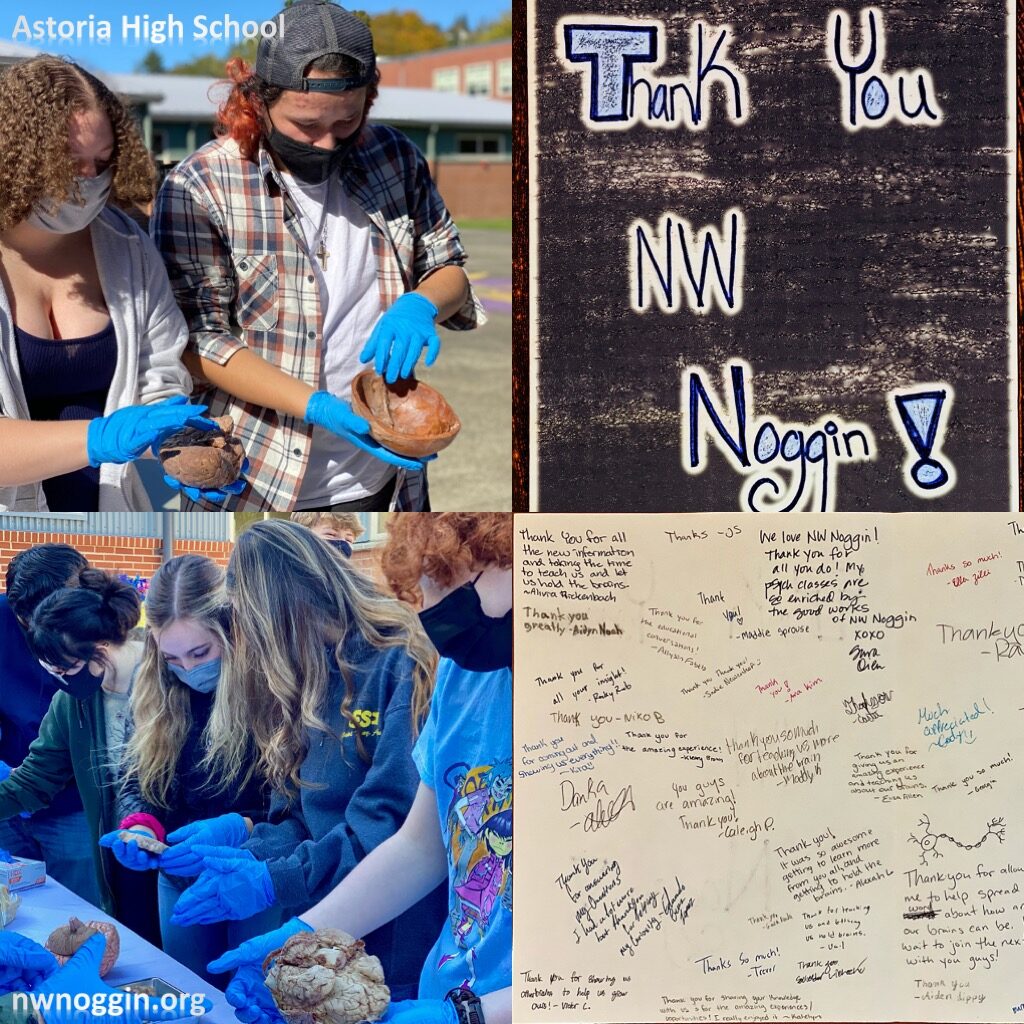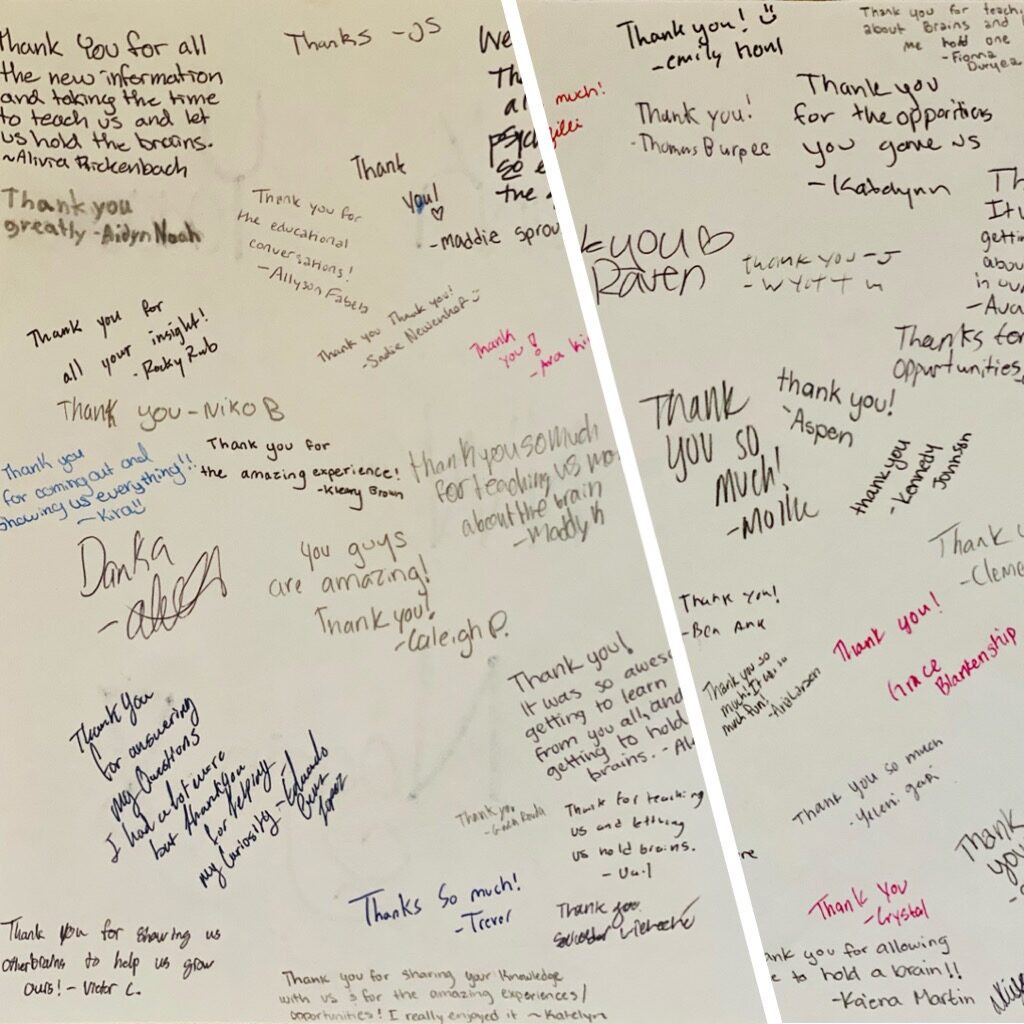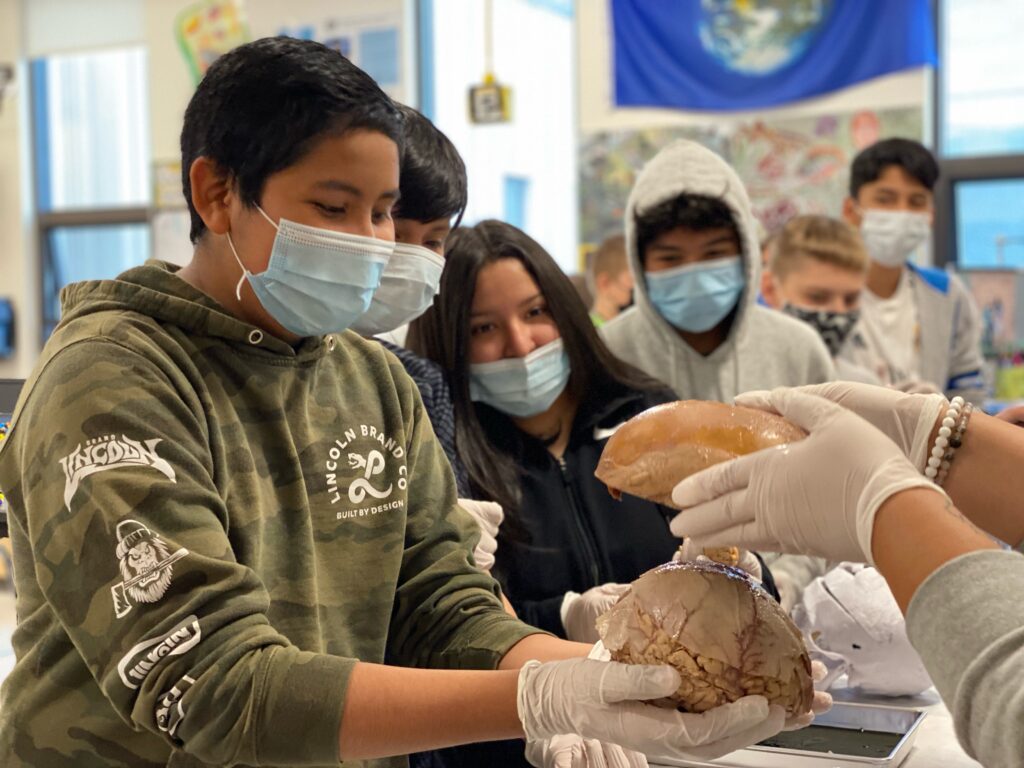
“Amazing the things you find when you bother to search for them.”
― Sacagawea
We’re approaching a full decade of volunteer outreach amidst a landscape of extensive public “STEM Hub” investments, well-funded institutional outreach positions, paywalled conferences and museum exhibitions aimed at communicating science. But we’re pretty excited about the rich, genuine connections we’ve made with over 50,000 diverse community members across the Northwest (and elsewhere!), while not seeing people as experimental subjects, marketing opportunities or sources of cash.

“Our rural Clatsop County students don’t have a ton of access to out-of-the-box programming like NW Noggin. The chance to engage learning in a different way and to hold real brains – students are still buzzing about the visit!” ― Meredith Payton, TRIO Program @ Clatsop Community College
LEARN MORE: What is NW Noggin?
LEARN MORE: Toward Inclusive STEM Classrooms: What Personal Role Do Faculty Play?
LEARN MORE: BioGifting brains
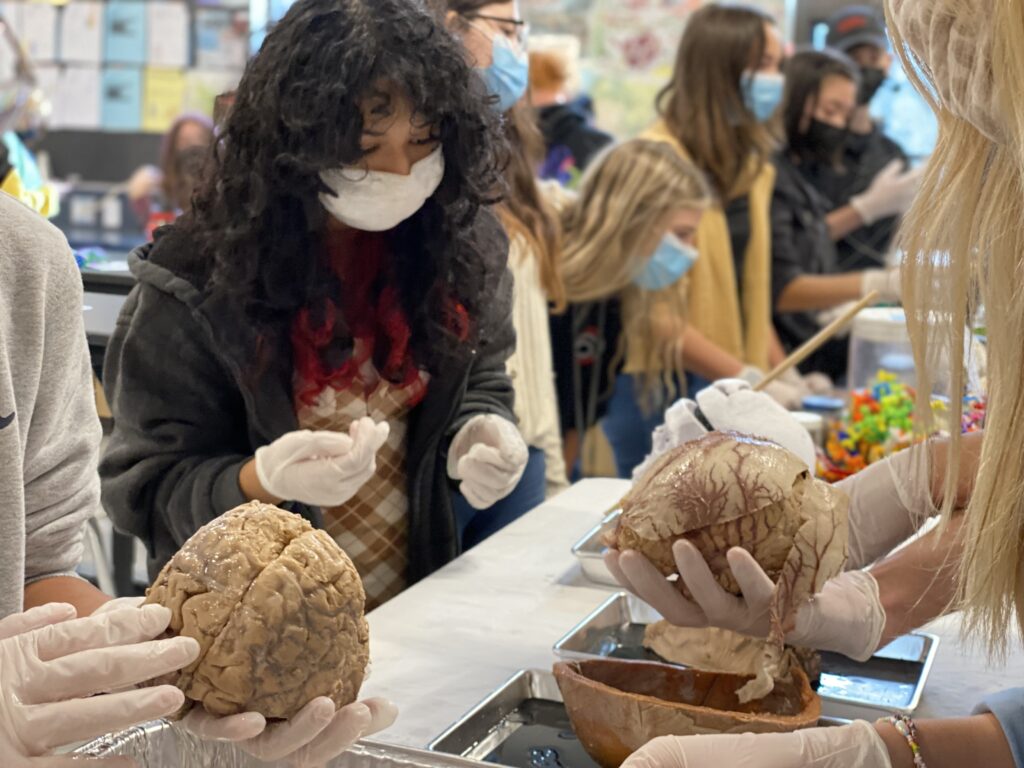
“It was insightfully fun!”
― Aidyn Noah, 12th grader at Astoria High School
We go places!
We aim to listen and discover what people already know about their brains, behavior, perceptions and interests – instead of arriving as “experts” with rote institutional elevator pitches on pause. We’ve traveled to urban and rural K12 public classrooms in Oregon, Washington, San Diego, Chicago and DC, houseless youth nonprofits, museums, correctional facilities, Congress, neuroscience conferences, Native summer camps, coffee shops and pubs, bringing real brains and curious volunteers – for free.
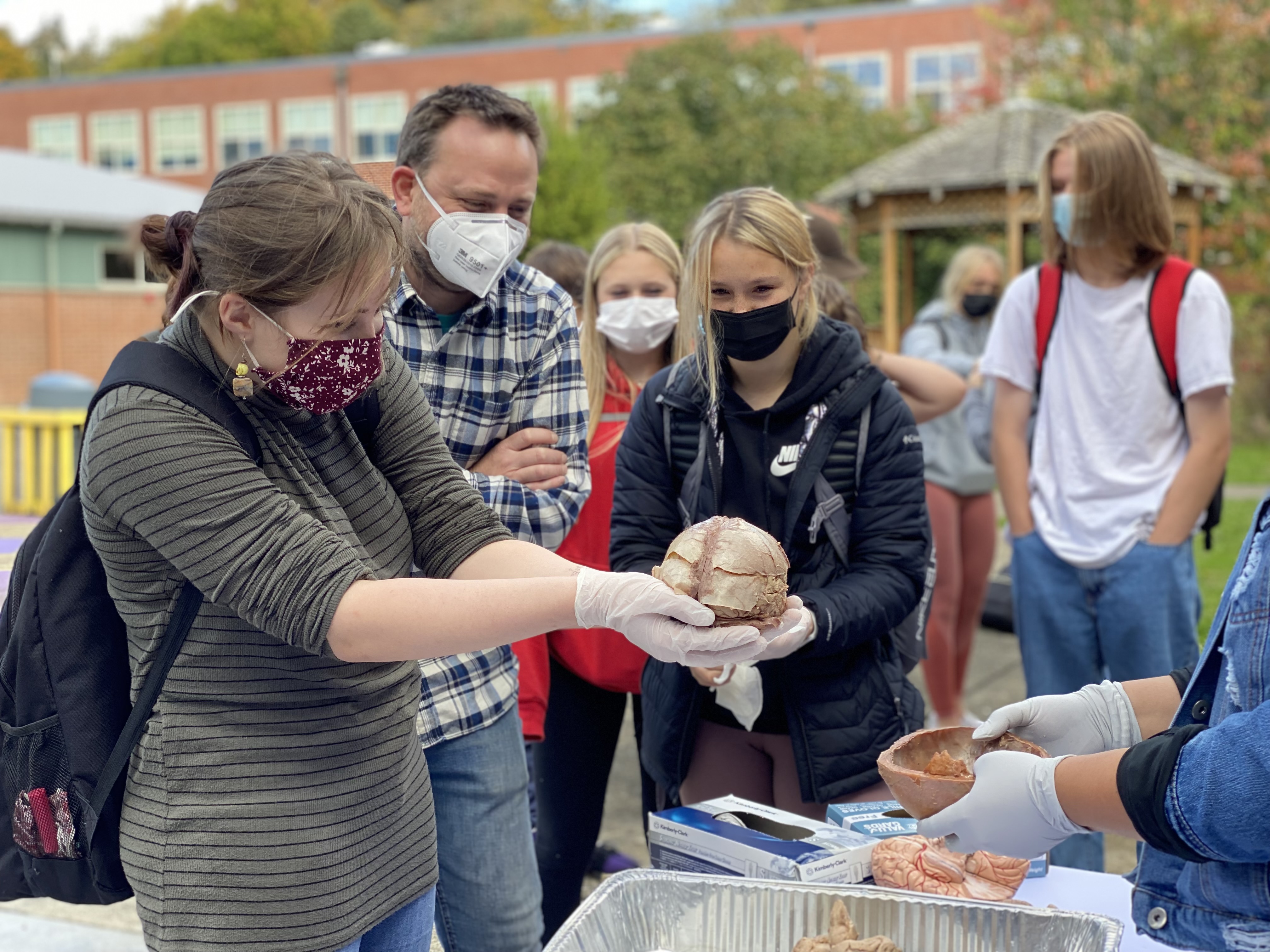
“They answered questions I had in way I could easily understand.”
― Katelyn Cosner 12th grader, Astoria High School
Sharing our own stories from classrooms and laboratories introduces career and educational options people might not have considered, and our enthusiastic and accomplished undergraduate, graduate and faculty volunteers are living, present examples of doing what other community members – and not just those with privilege and resources for admission, tuition or tickets – might want to contribute to as well.
LEARN MORE: Noggin Bloggin
LEARN MORE: Synaptic Community Connections
LEARN MORE: Inequality in Teaching and Schooling
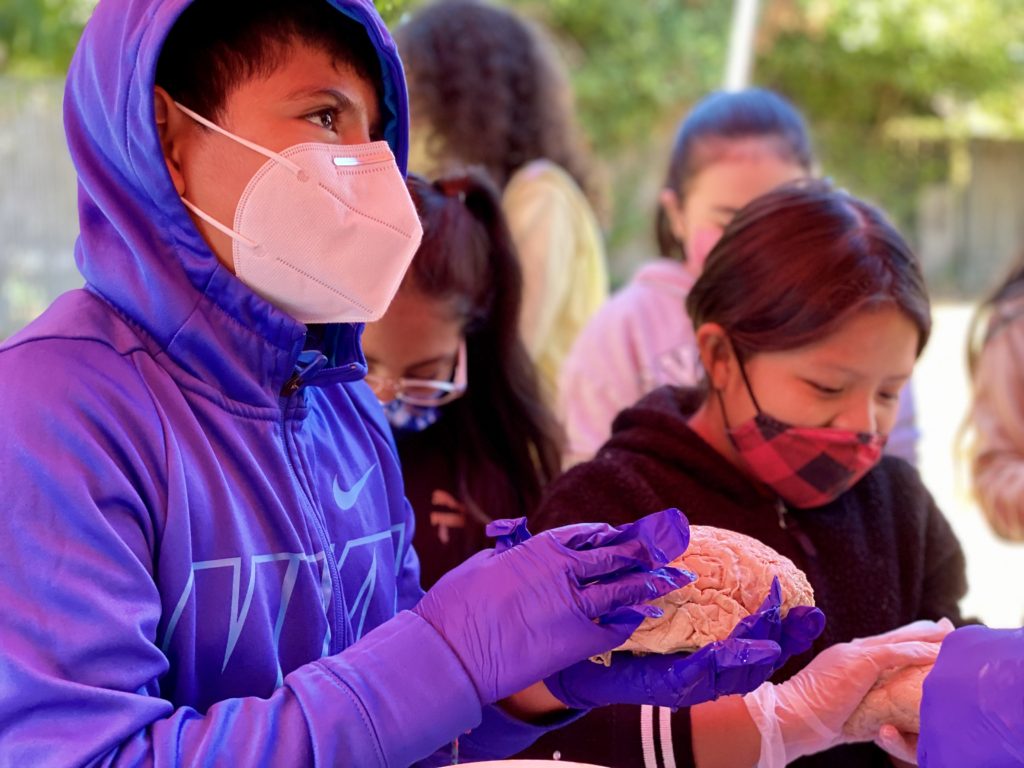
We make art!
We love it when we can discuss questions about how we think, respond and act – and explore the neurophysiology behind it – all while crafting the beautiful, complex cells that make us who we are.
“The combination of art and the brain made it way easier to learn in a way that is interesting.”
― Michael Christiansen 12th grade, Astoria High School
LEARN MORE: The effects of arts-integrated instruction on memory for science content
LEARN MORE: Action & Potential in Outreach, Education and Research
LEARN MORE: Synapsing in San Diego

A North Coast Return
We are indebted and somewhat in awe of Meredith Payton, the College and Career Advisor for the TRIO Pre-College Program at Clatsop Community College – home of the Bandits. She helped put together an incredible, week-long return to one of our favorite, familiar places – the North Oregon coast!
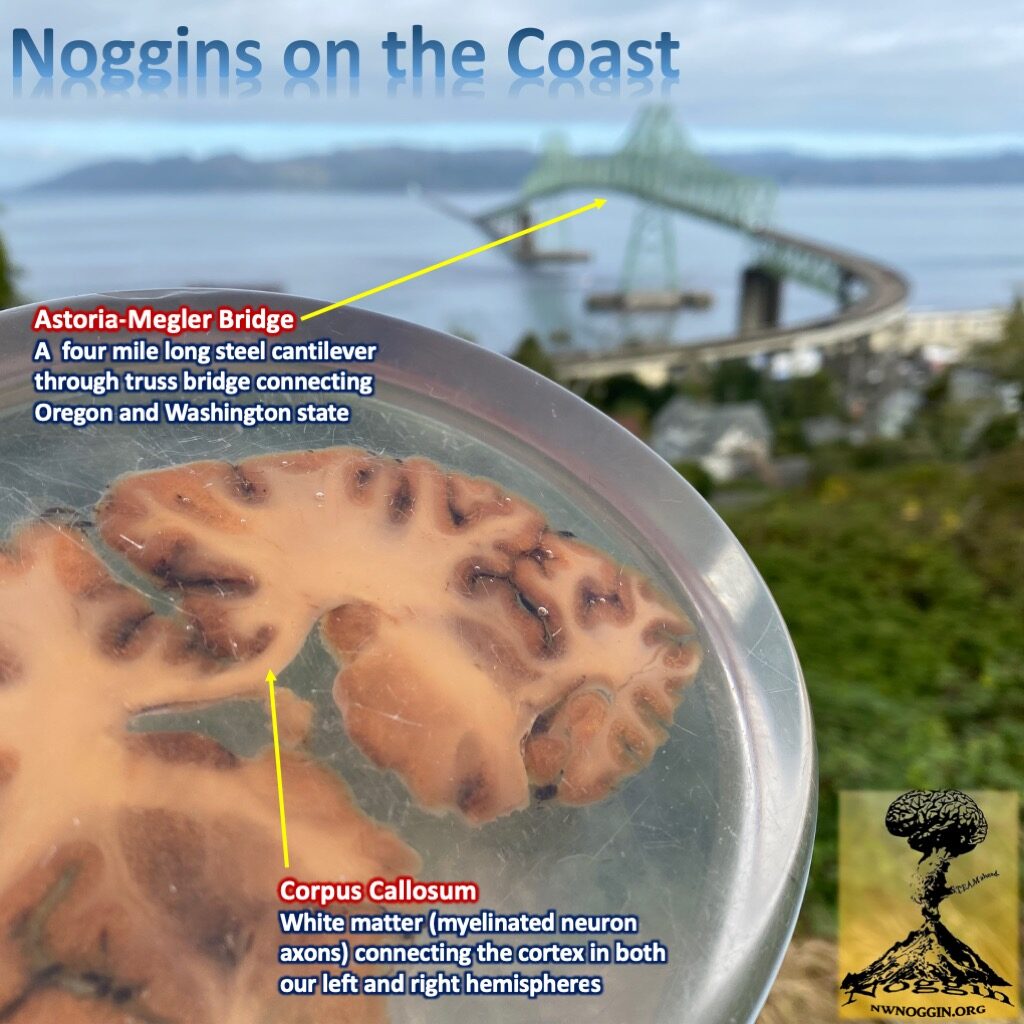
LEARN MORE: Clatsop Community Cortex
LEARN MORE: North Coast Noggins: Art, Alevins & Brains!
LEARN MORE: Accumbens in Astoria
Meredith reached out and organized individual accommodations for our volunteers at the Rosebriar Mansion in Astoria, Oregon. She arranged meals from the legendary Fort George Brewery and Peter Pan Market in Astoria, and The Stand in Seaside, and distributed welcome gift cards from the Astoria Coop!
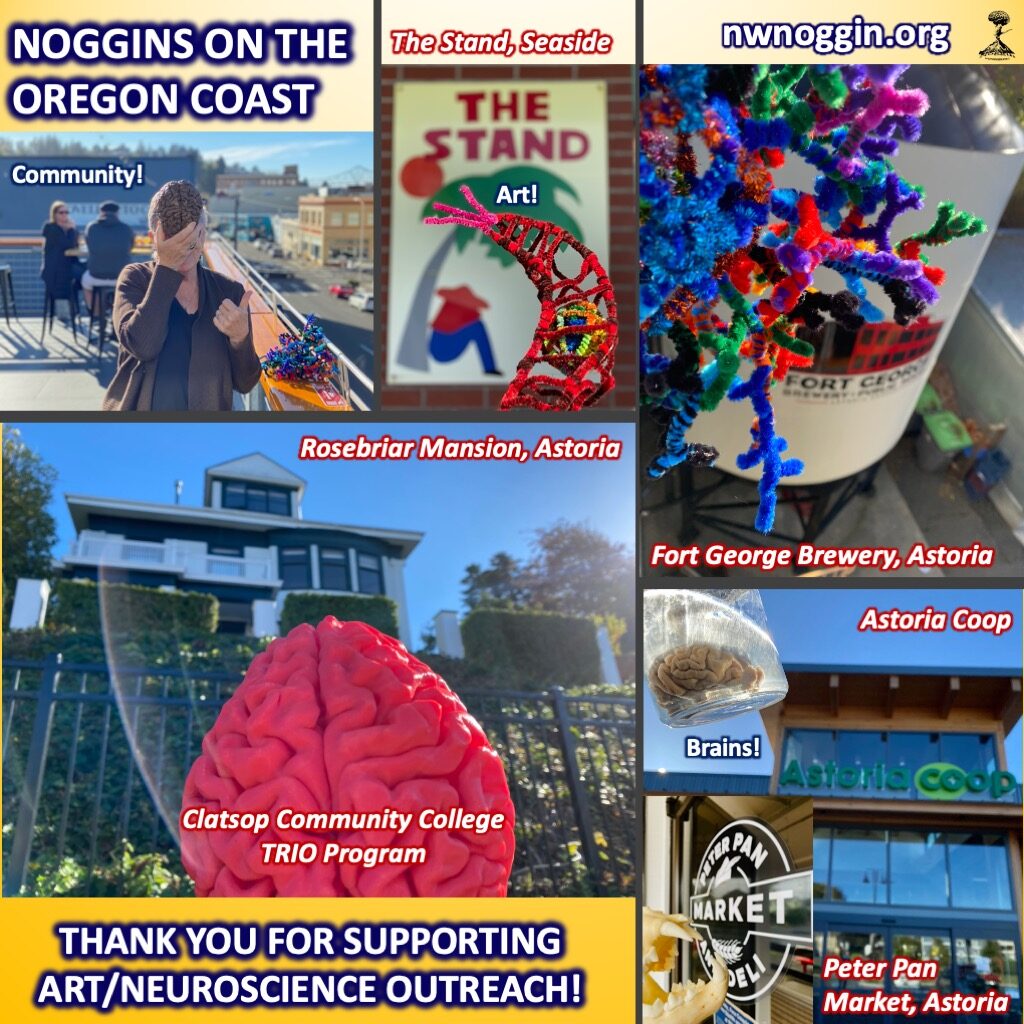
Thanks to everyone for supporting an exciting week of neuroscience and art!
Our volunteers included a strong, talented contingent fascinated by interdisciplinary neuroscience at Portland State University, including Ellie Phelps, Greyson Moore, William Leverette, Michael Deveney and Jasmin Mabry. Jasmin, an NIH BUILD EXITO scholar, is a graduate of Astoria public schools, and was excited to return to her hometown.
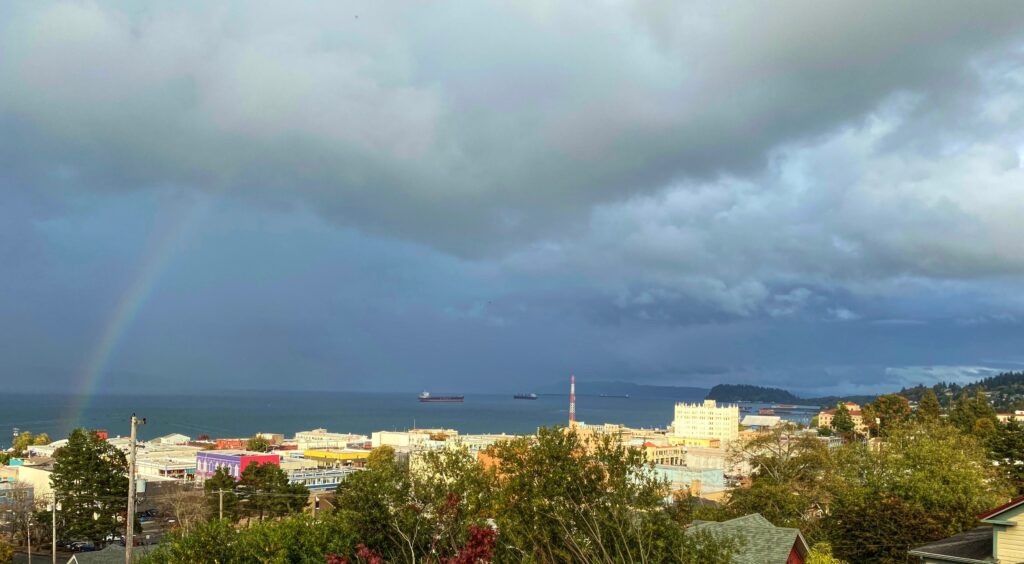
We were also thrilled to welcome back Lidia Echeverria-Garcia, a recent PSU graduate and current graduate student in Communication Disorders and Sciences at the University of Oregon. And we were joined by Laura Retzlaff, a recently retired 3rd grade teacher from Bay Area public schools.
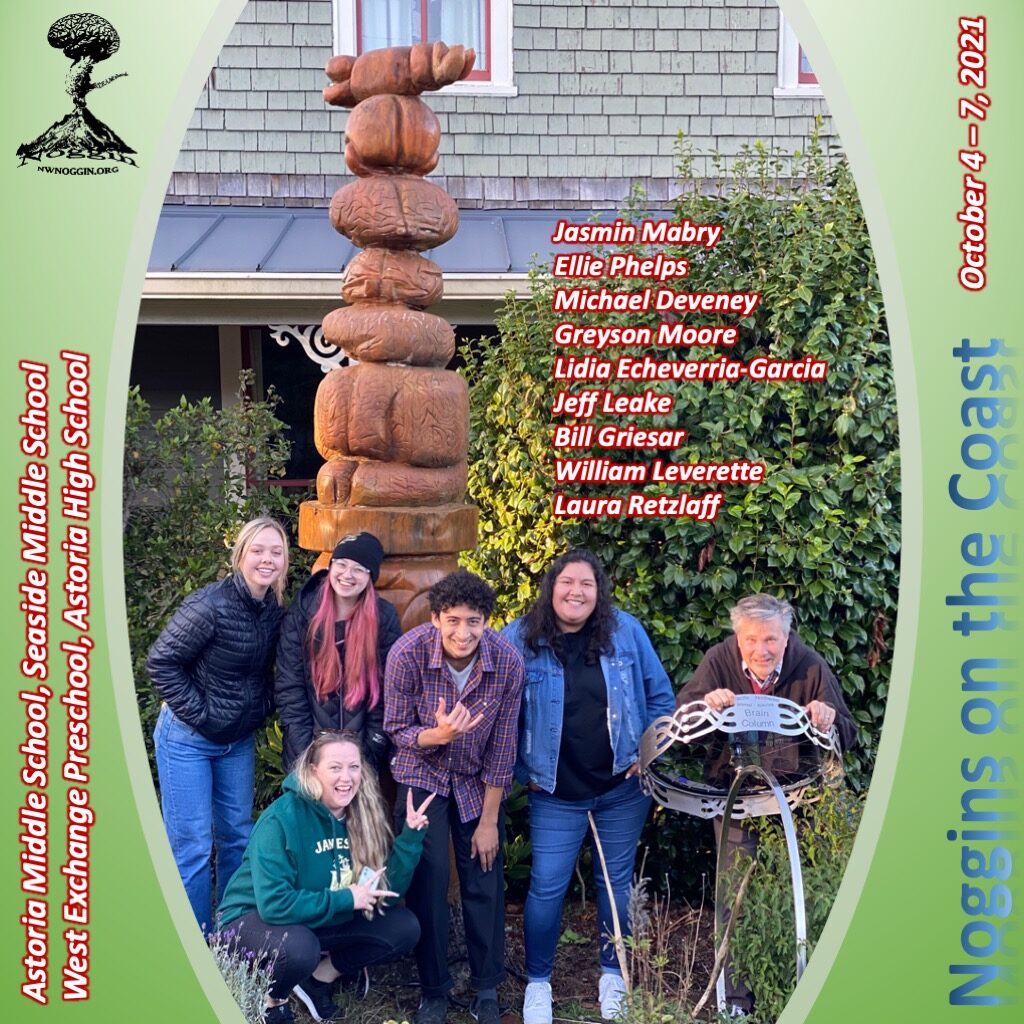
Faculty take note: you can do this too!
Meredith also arranged a packed and lively schedule of largely outdoor visits for our COVID-vaxxed and masked up volunteers, and over four days we took questions, discussed neuroscience research, poked brains and made original neurons and glia at public schools in Astoria and Seaside!
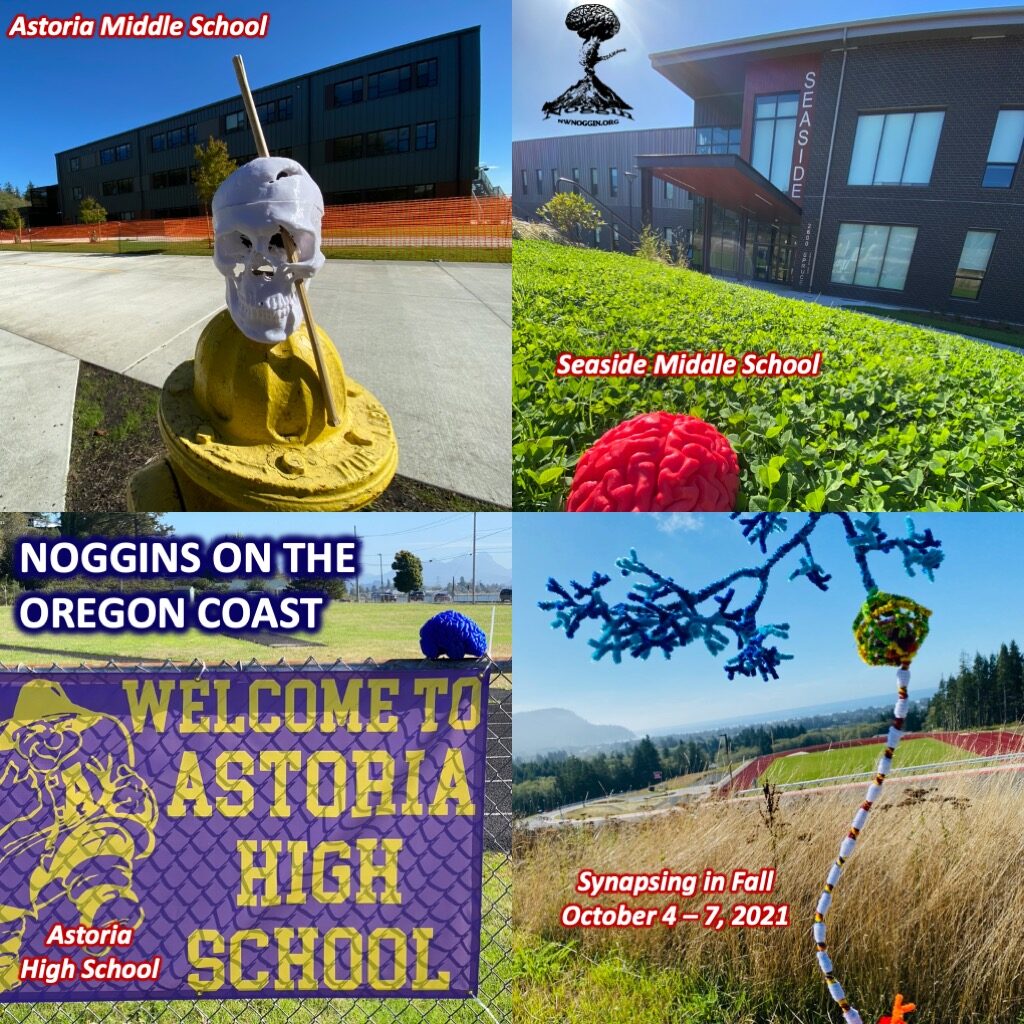
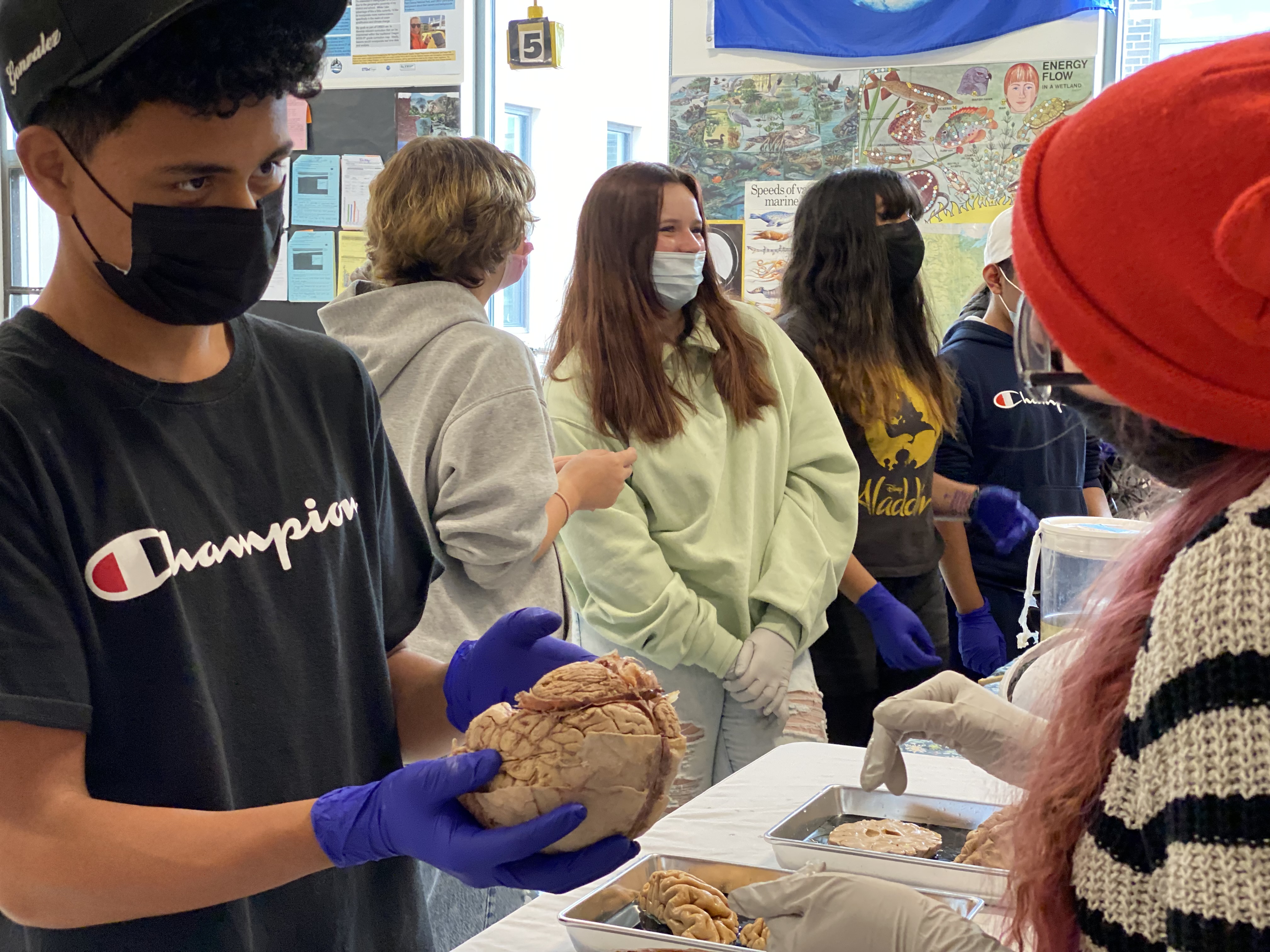
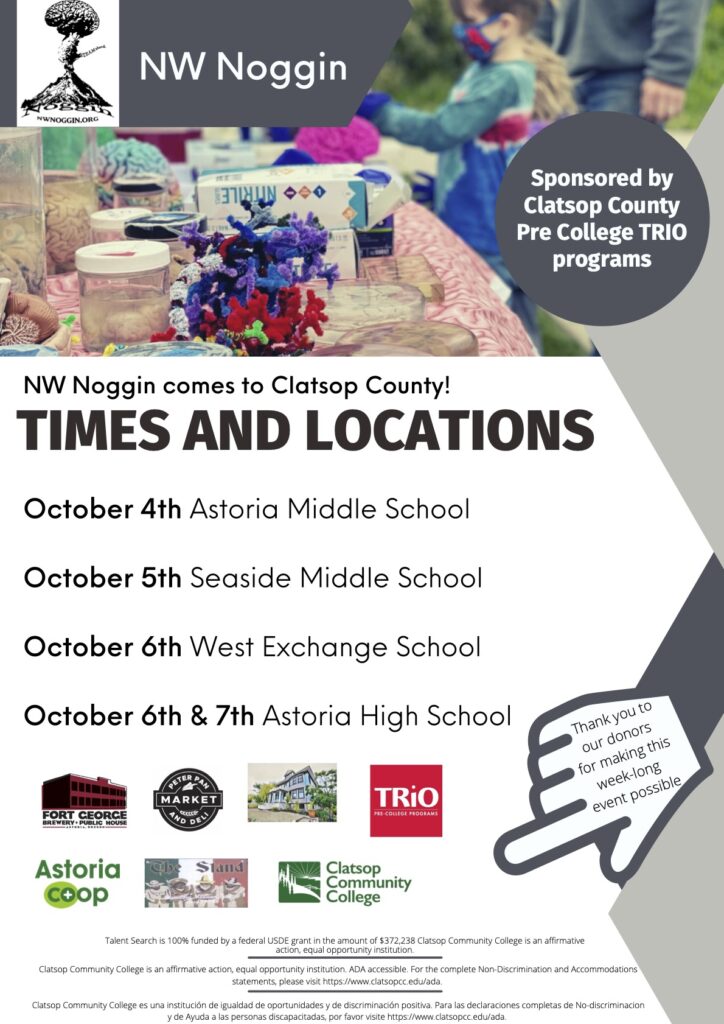
Astoria Middle School
The home of the Vikings – just like Portland State! We met outdoors with about 100 6th grade students on a beautiful Monday, along with teacher Kathryn Killough.
LEARN MORE: The history of head transplantation: a review
LEARN MORE: Ethical, Social & Psychological Challenges of Head Transplantation in Human
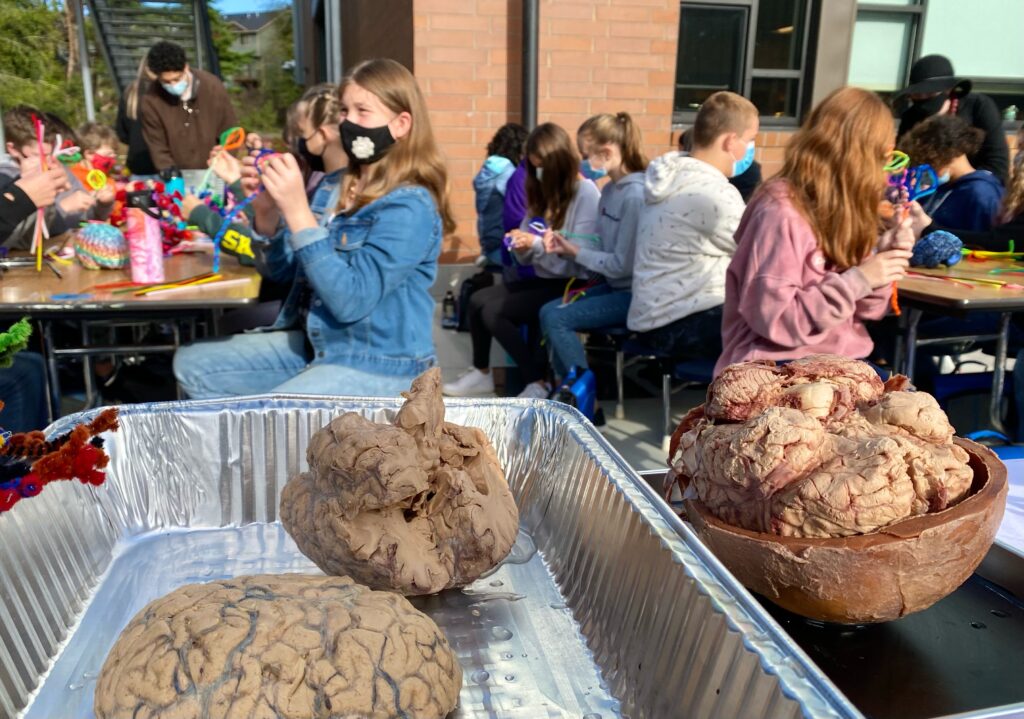
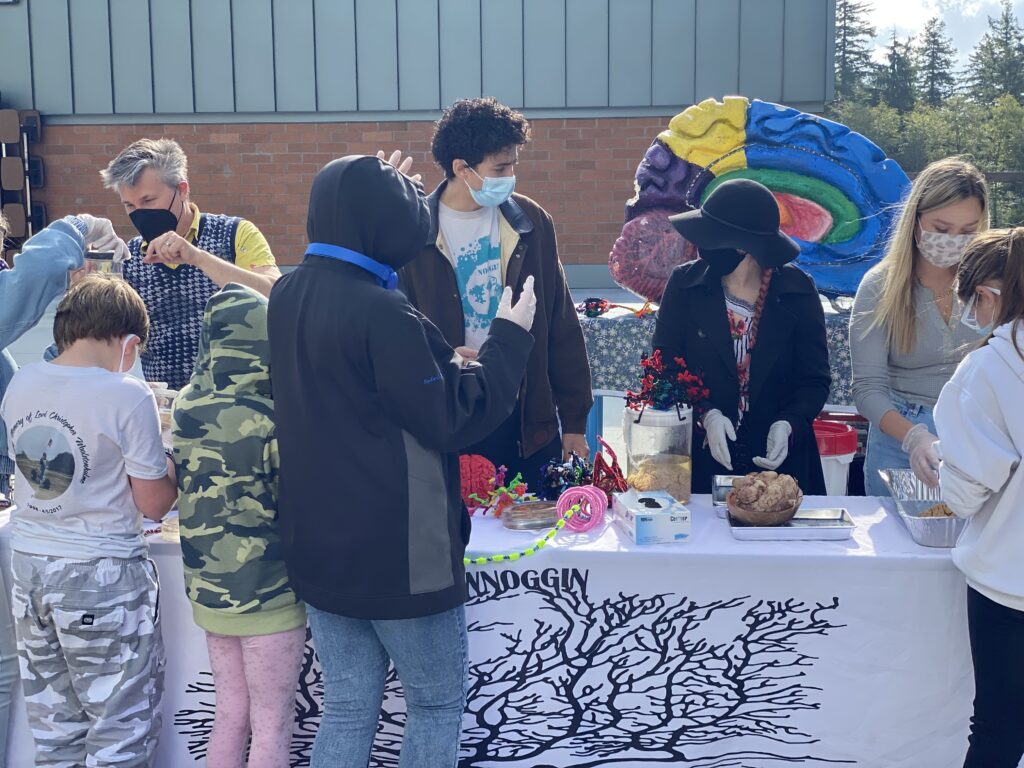
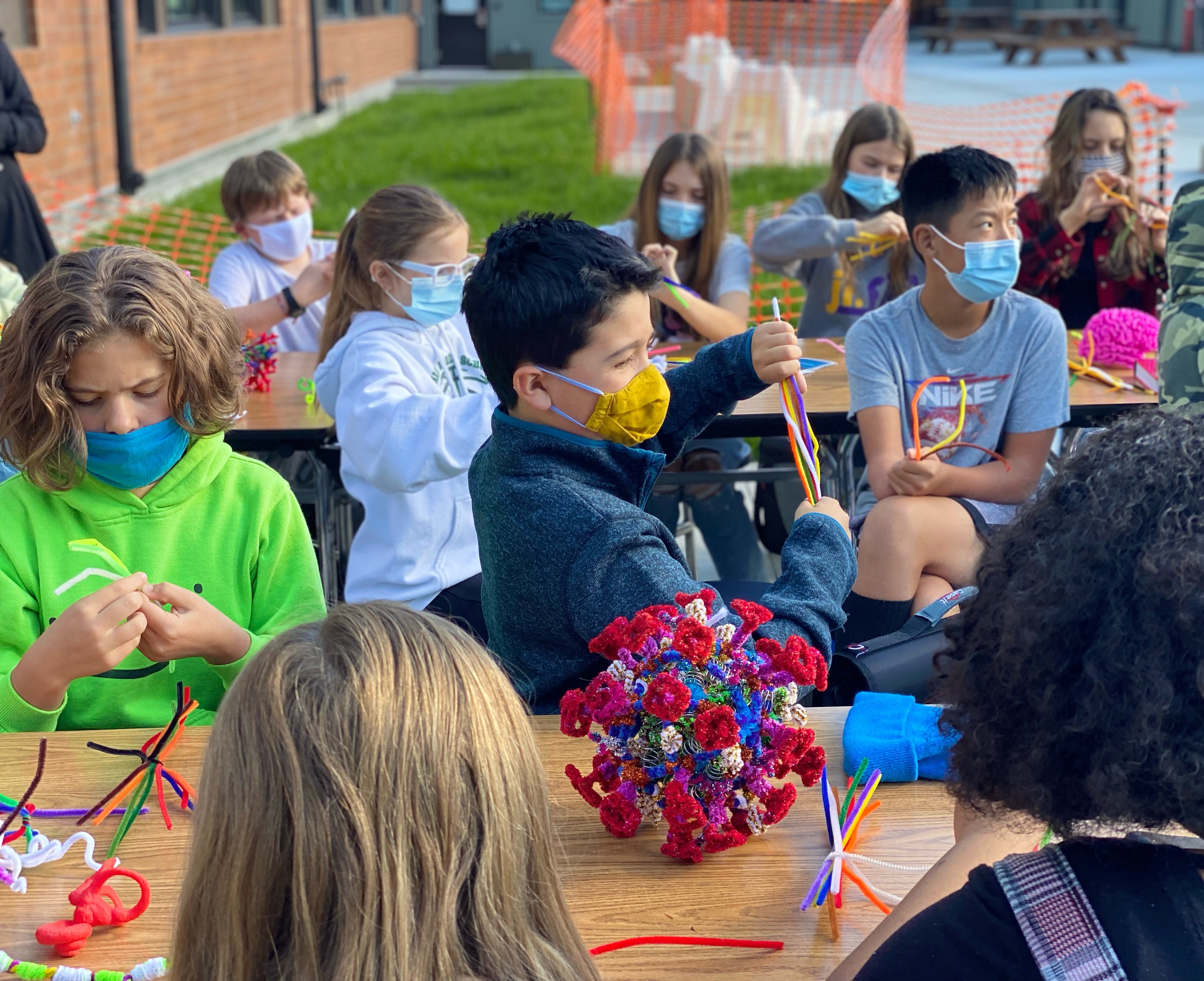
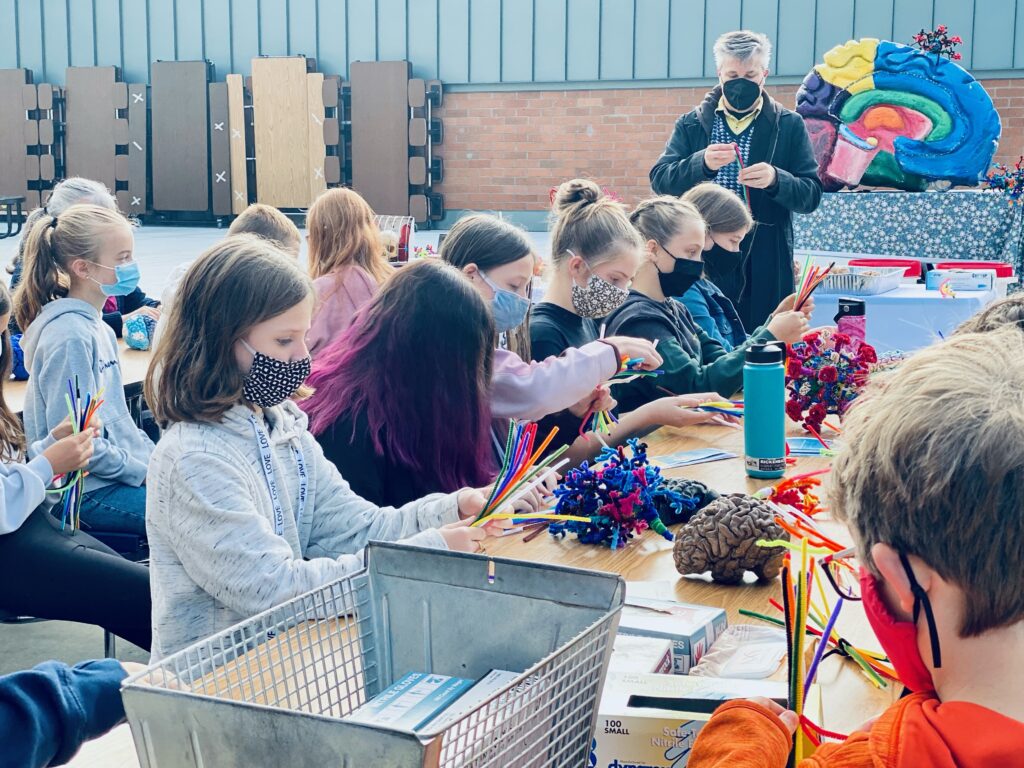
LEARN MORE: The evolution of contralateral control of the body by the brain: is it a protective mechanism?
LEARN MORE: Dendritic Spine Plasticity: Function and Mechanisms
LEARN MORE: What is brain surgery like?
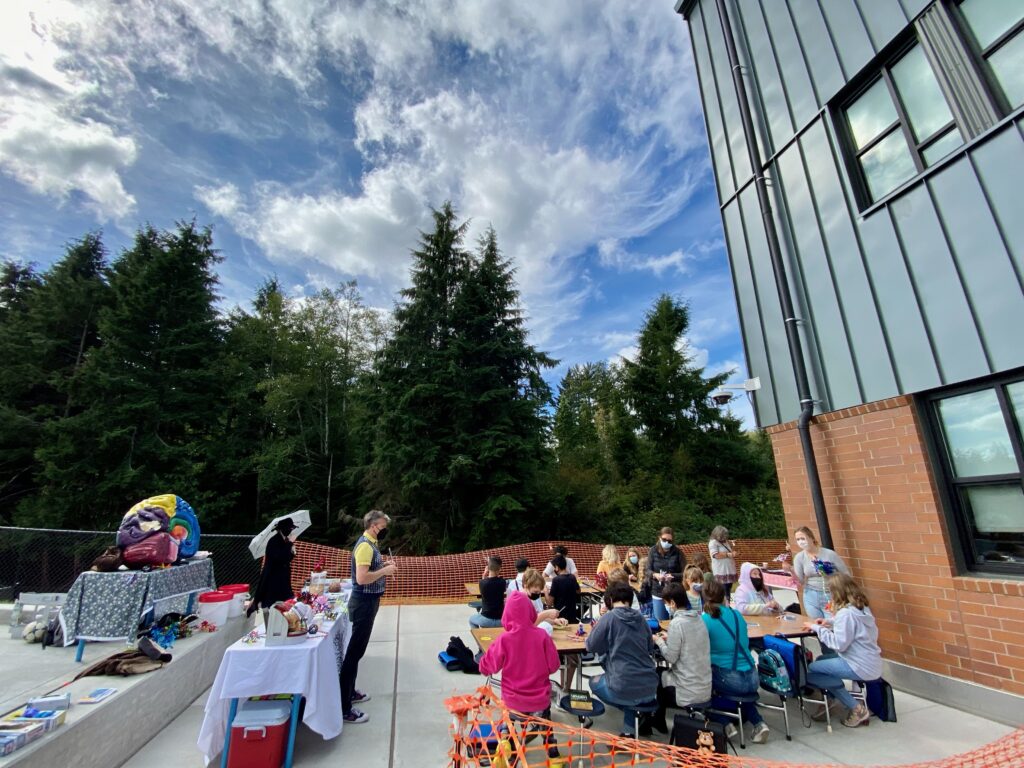
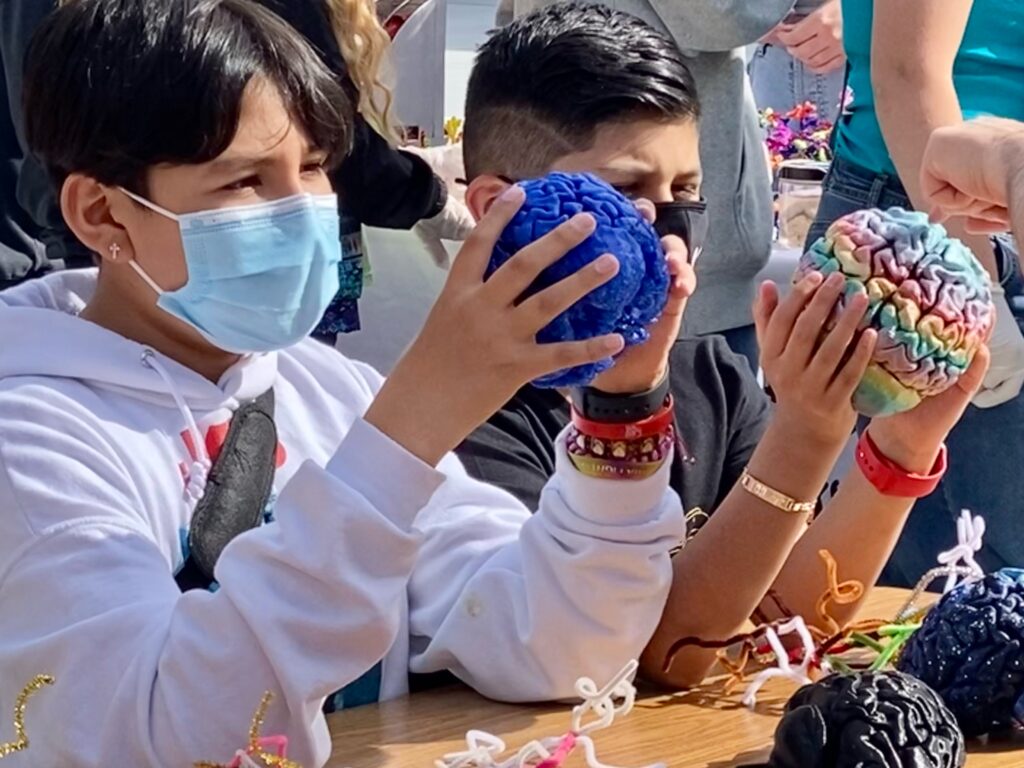
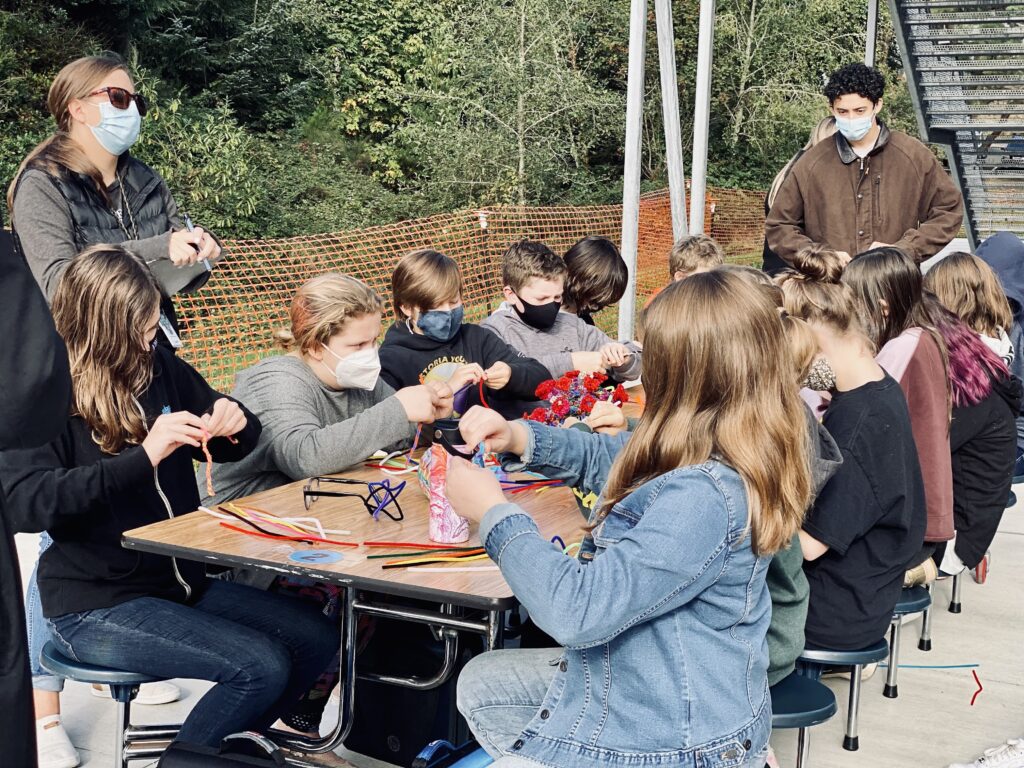
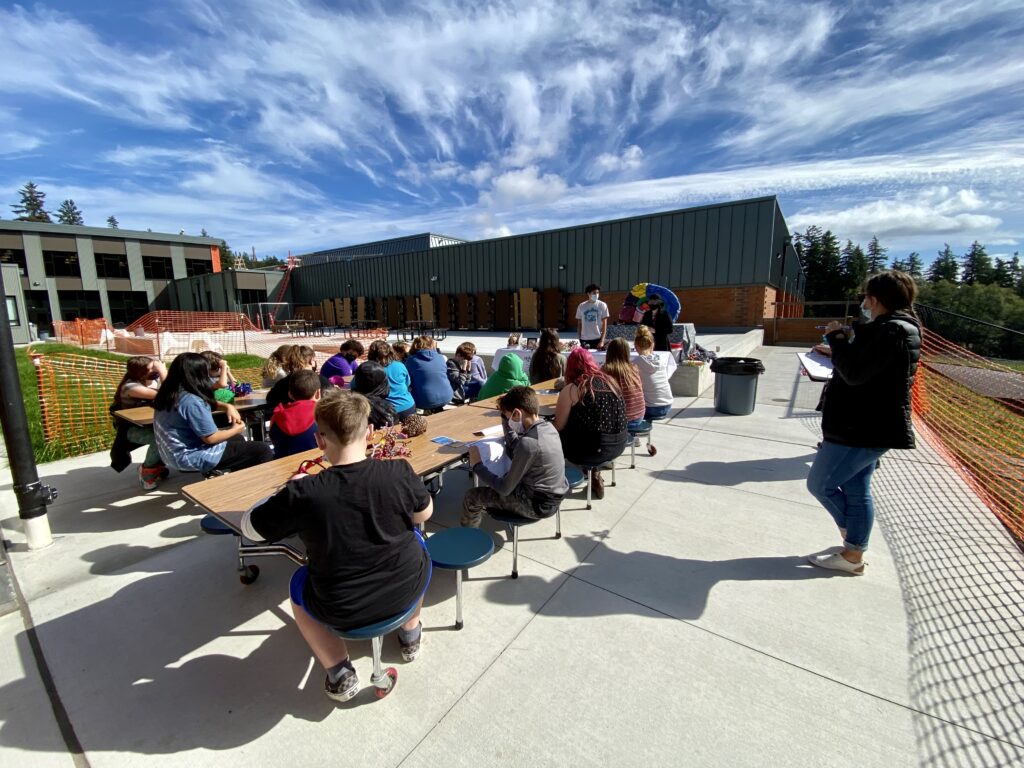
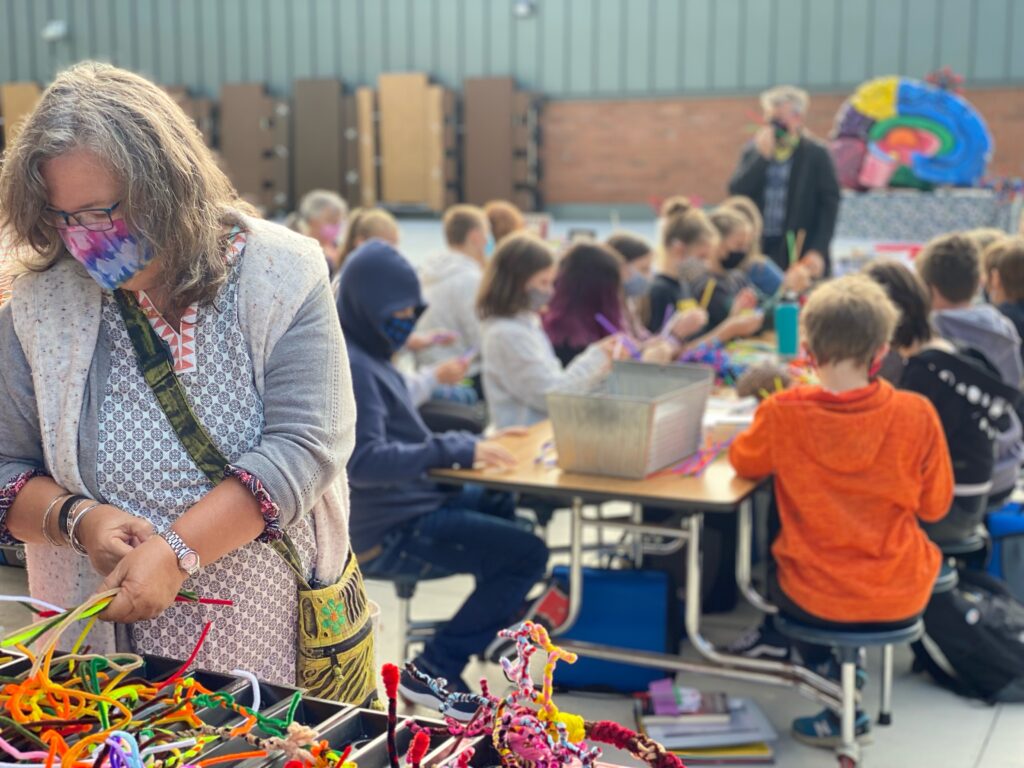
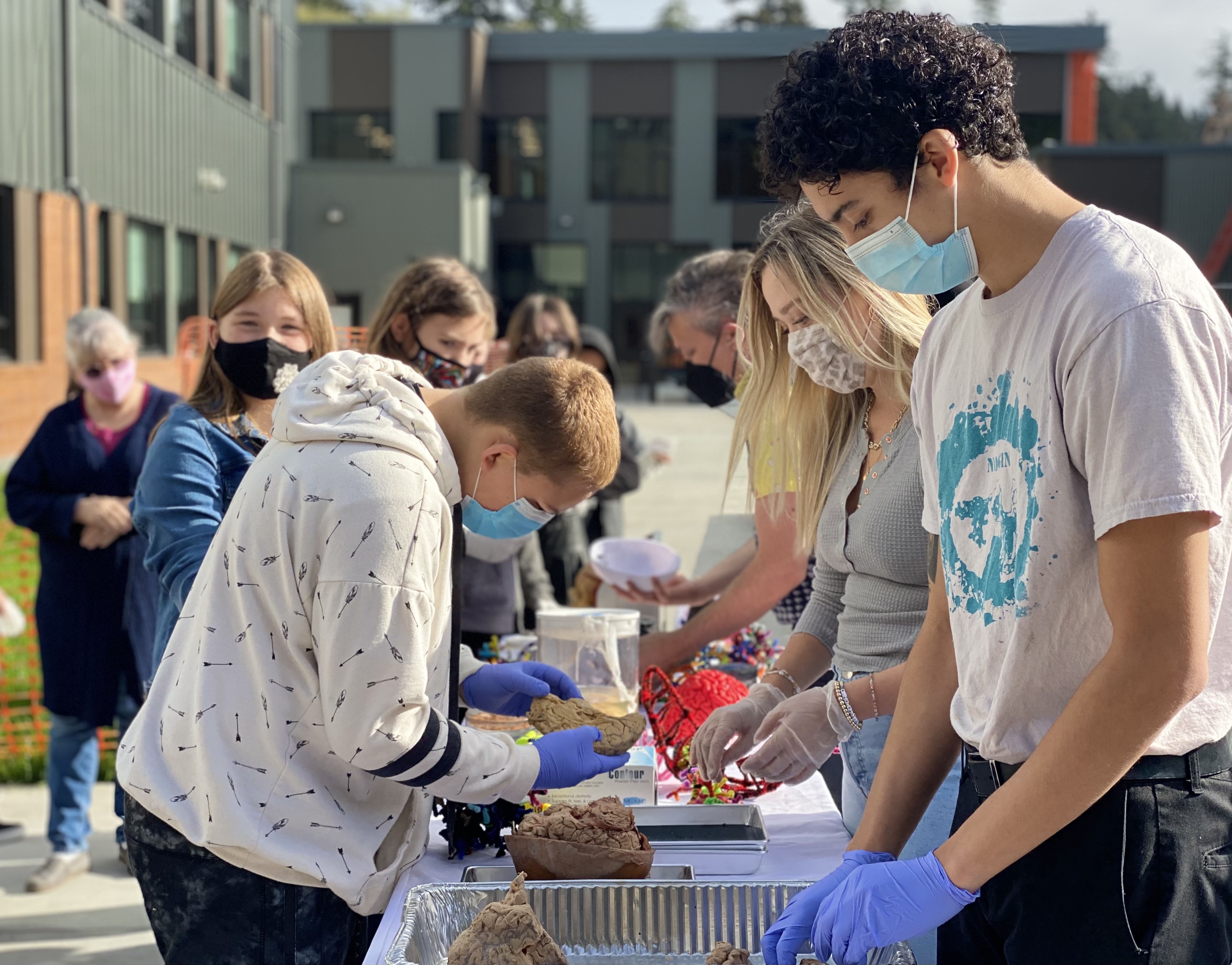
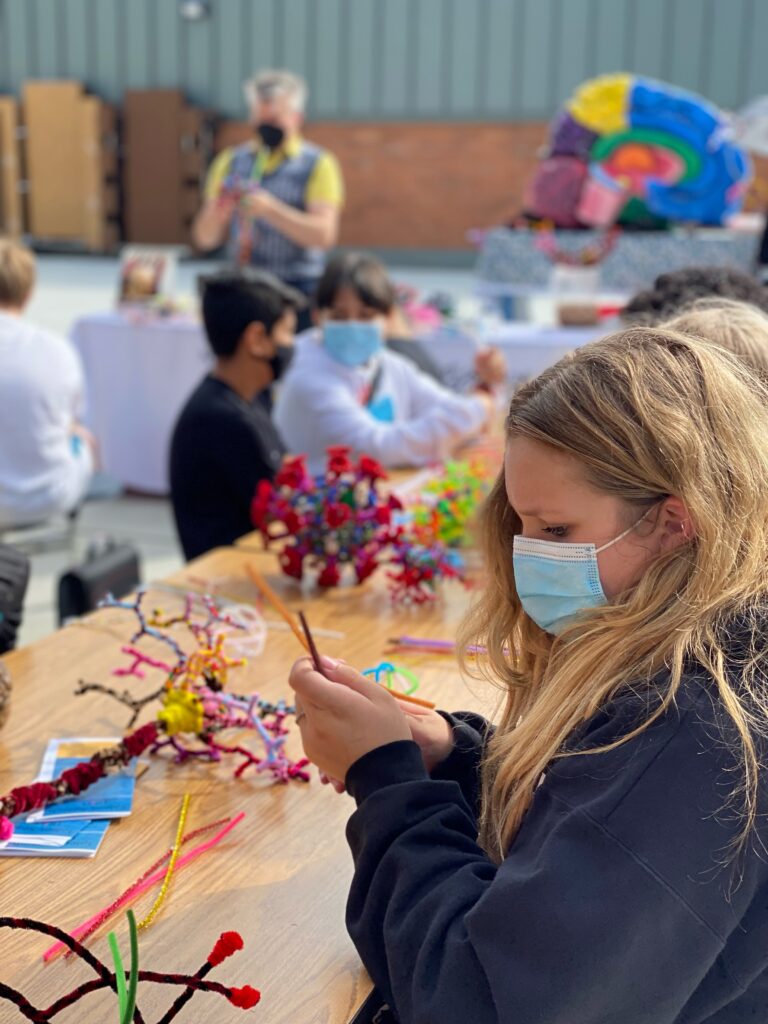
LEARN MORE: Brains & Sex @ SfN
LEARN MORE: Both Predator and Prey
LEARN MORE: Predation pressure shapes brain anatomy in the wild
LEARN MORE: Melatonin: What You Need To Know (NIH)
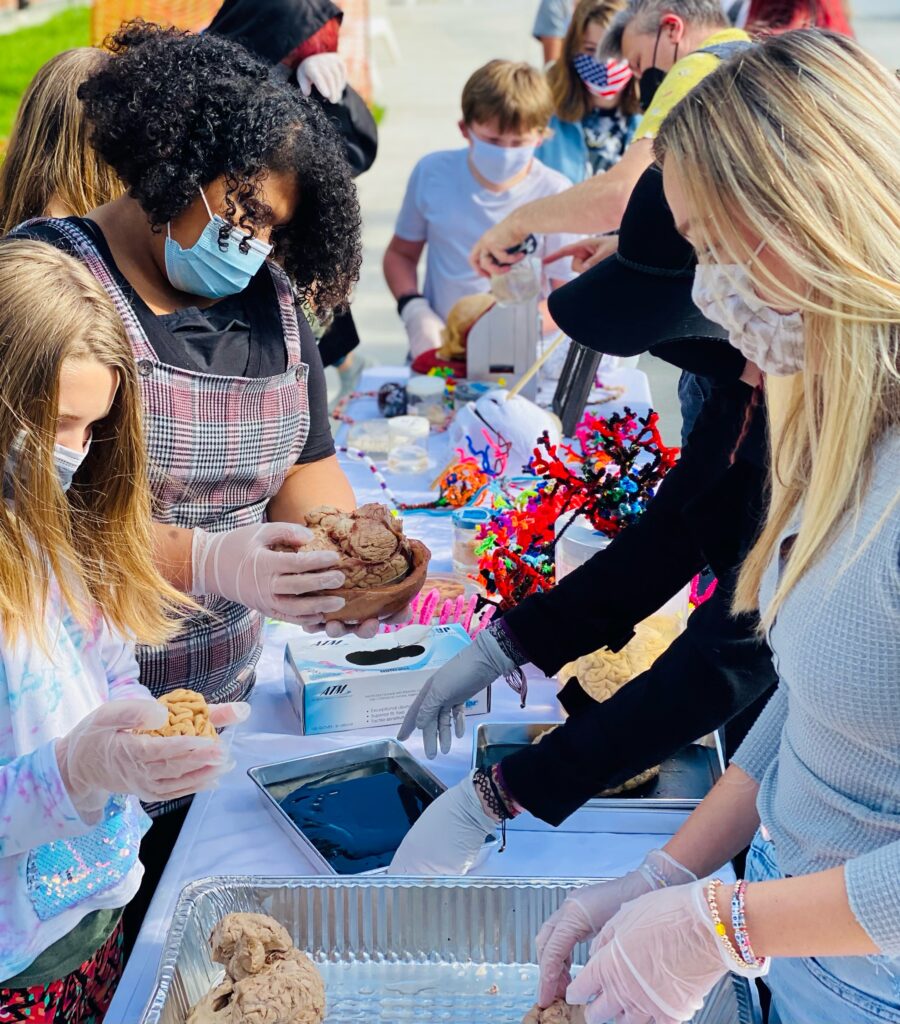
Seaside Middle School
Home of the Sharks! We met inside on a rainy Tuesday with over 150 8th grade students in Annie Foreman’s science classroom, which offered a striking and memorable view of the Pacific Ocean.
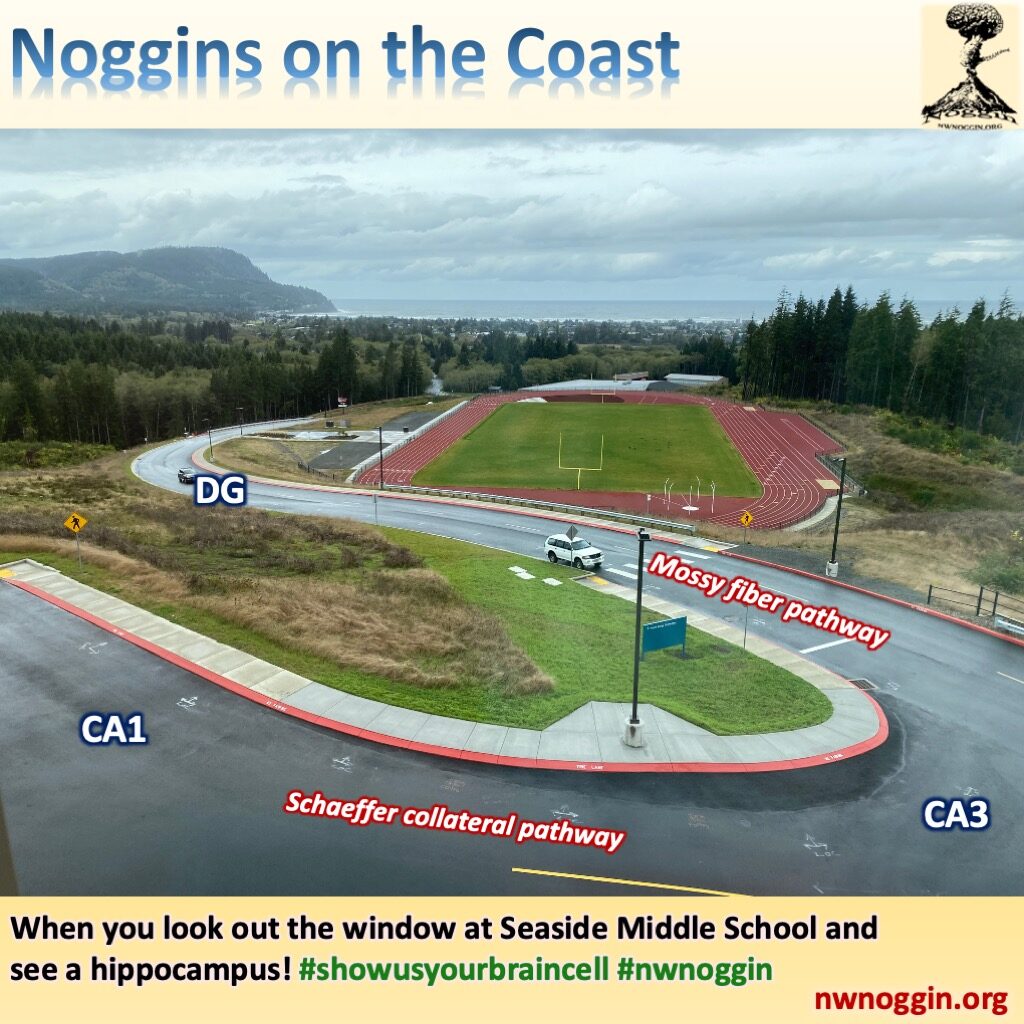
LEARN MORE: Memory, Poetry & Brains
This was our first return to indoor outreach since the OHSU/OMSI Brain Fair in 2020!
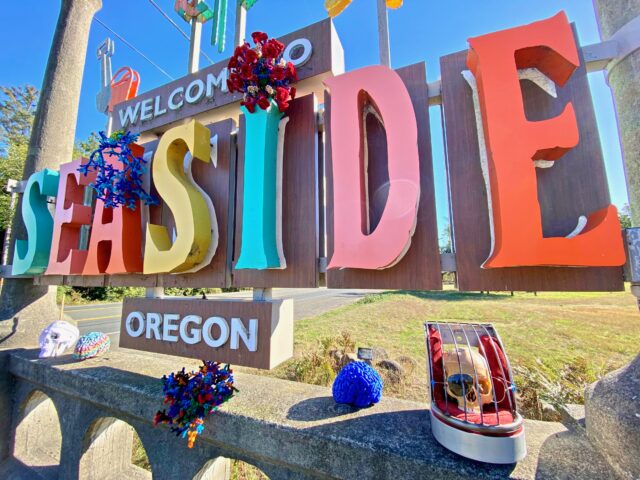
We noticed that students were better than many adults at keeping their masks over their noses 🙂
“Overall, findings demonstrate mask-wearing patterns during the COVID-19 pandemic are differently shaped by racial and ethnic background and gender…White men were least likely to wear a mask…”
LEARN MORE: Understanding How Race, Ethnicity, and Gender Shape Mask-Wearing Adherence During the COVID-19 Pandemic
LEARN MORE: A comprehensive review of various categories of face masks resistant to Covid-19
LEARN MORE: An evidence review of face masks against COVID-19
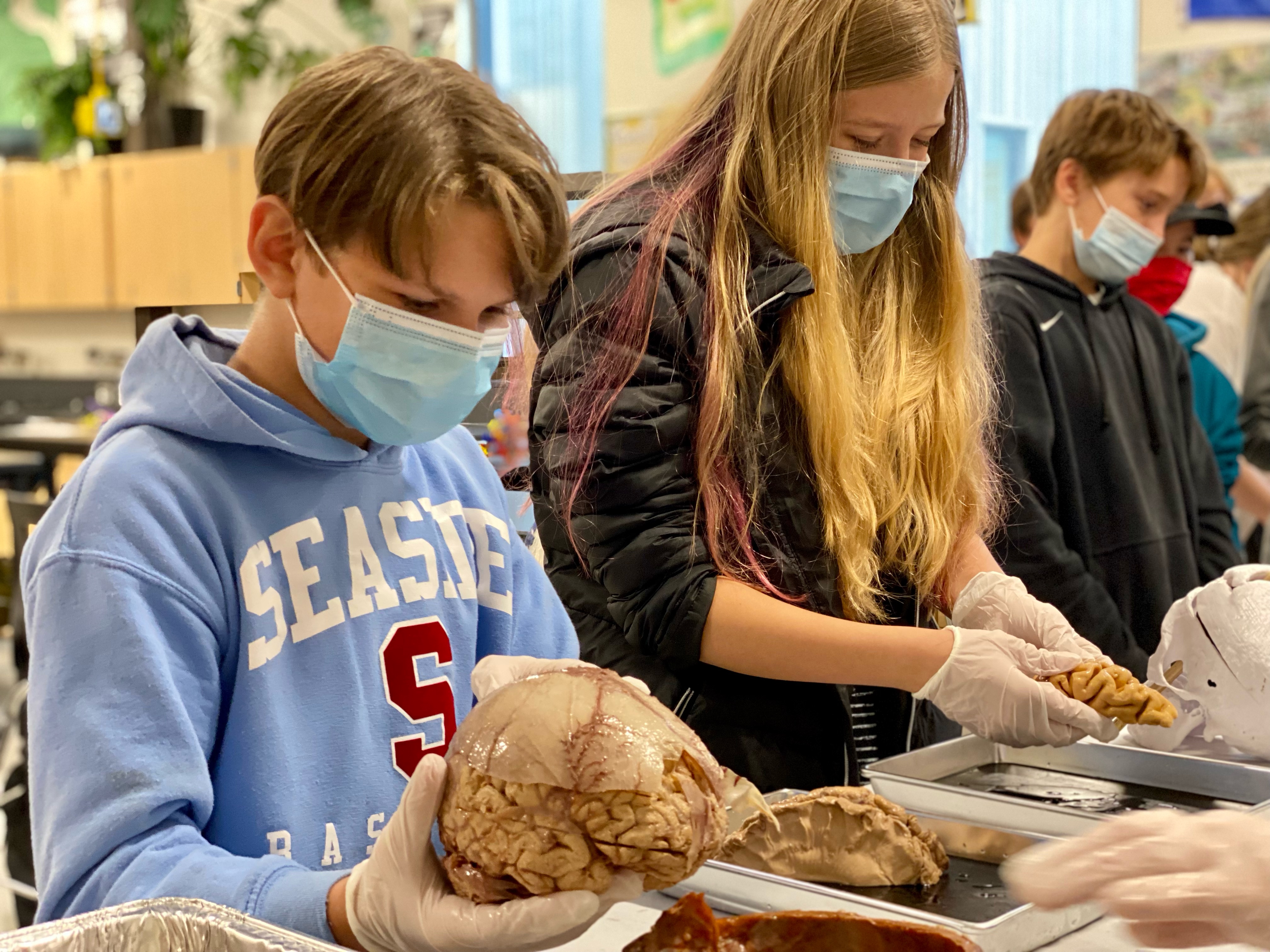
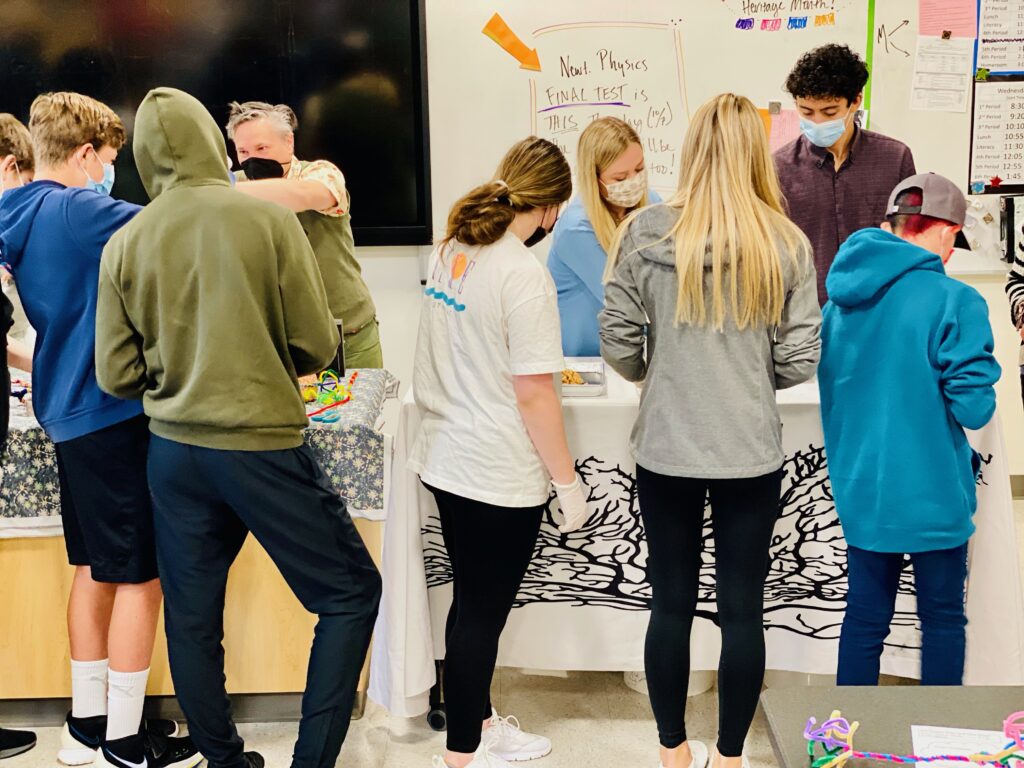
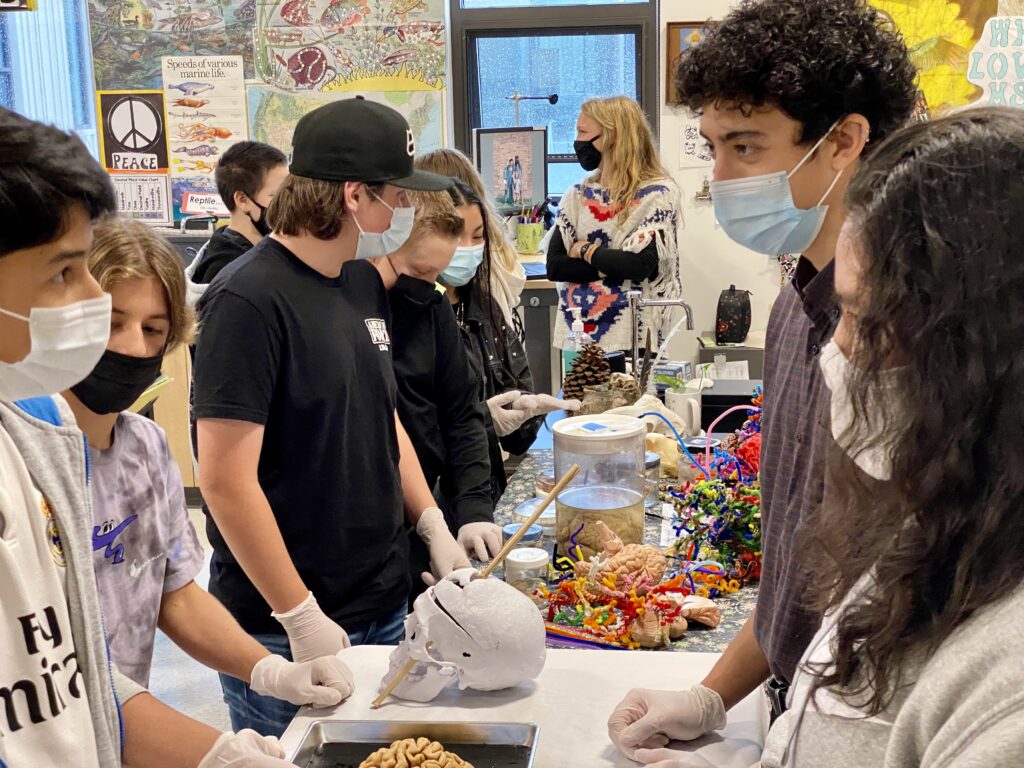


From University of Oregon volunteer Lidia Echeverria-Garcia: “Students were fascinated by the impressions of the veins and arteries on the inside of the skull – they though this was awesome to see. Many told me they thought our skull would be smooth on the inside too!”

Another day of amazing questions!
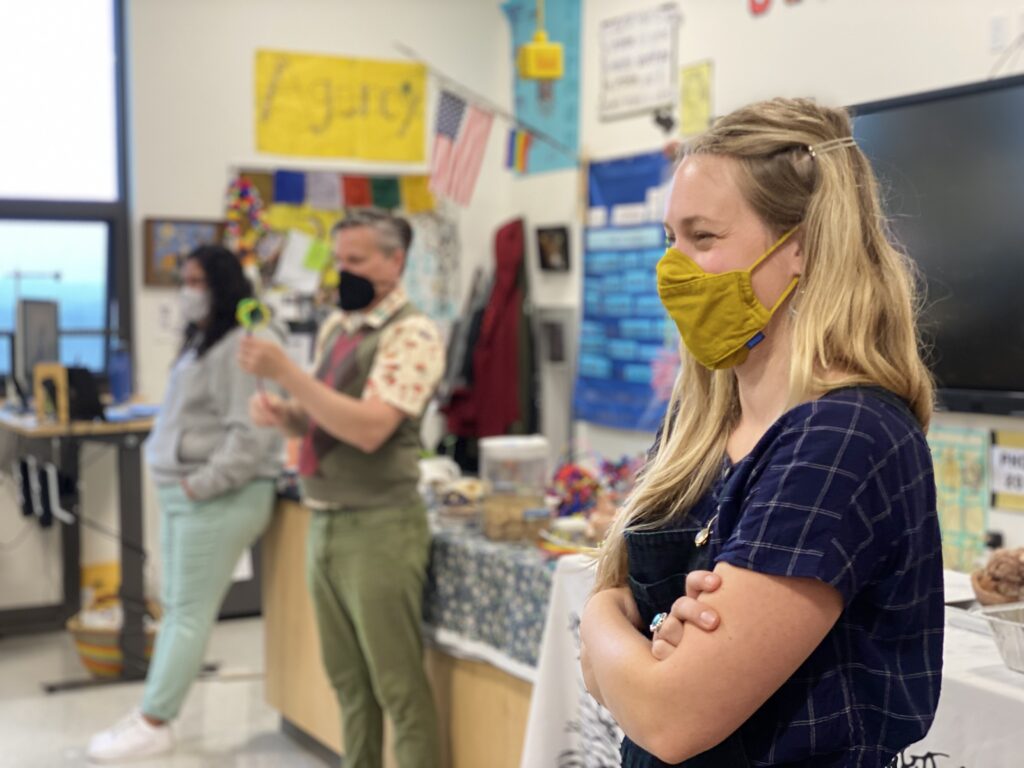
“Chicken’s brains are arranged at such an angle that the most basic parts of the brain, the cerebellum and the brain stem, can remain nestled in the neck even if most of the head is gone…”
― Rebecca Katzman
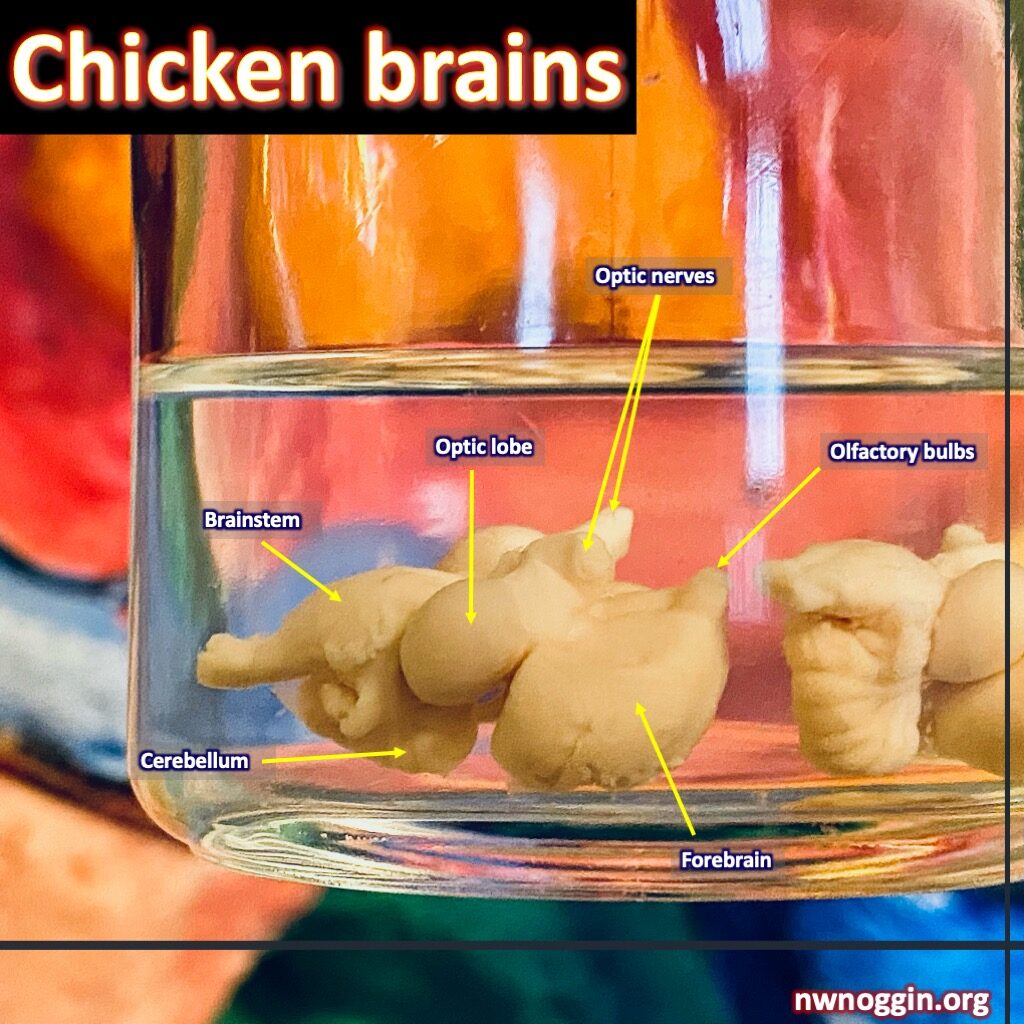
LEARN MORE: Here’s Why a Chicken Can Live Without Its Head
LEARN MORE: Mike the Chicken Lived for 18 Months Without a Head
LEARN MORE: Quantifying neuronal size: Summing up trees and splitting the branch difference
LEARN MORE: Now in stunning, whole-brain resolution: neurons
In response to one 8th grader, we considered how terms like “alcoholism,” “alcohol abuse” and “alcohol addiction” are less commonly used in counseling, because they fail to acknowledge the reality of reasonable alcohol use, and are often perceived as blaming people for their condition. However, the federal research agency responsible for funding studies of alcohol is still called the National Institute on Alcohol Abuse and Alcoholism (NIAAA).
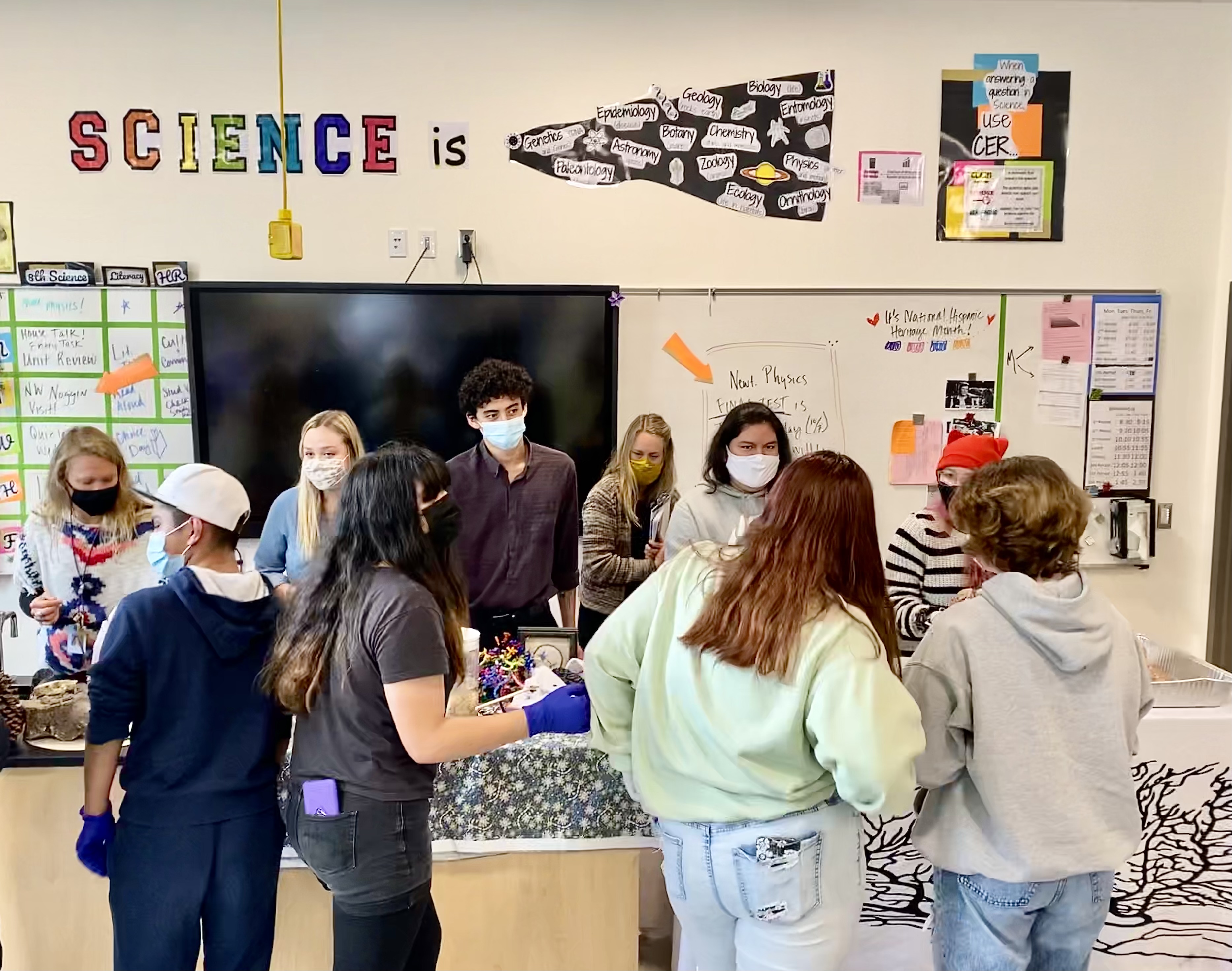
From Denesa Lockwood from the Portland Alcohol Research Center (PARC) at OHSU: “In research, we are also switching to Alcohol Use Disorder to indicate that it’s more of a collection of behaviors (including excessive and often dangerous binge drinking, but also chronic low level consumption as well).”
LEARN MORE: Understanding Alcohol Use Disorder
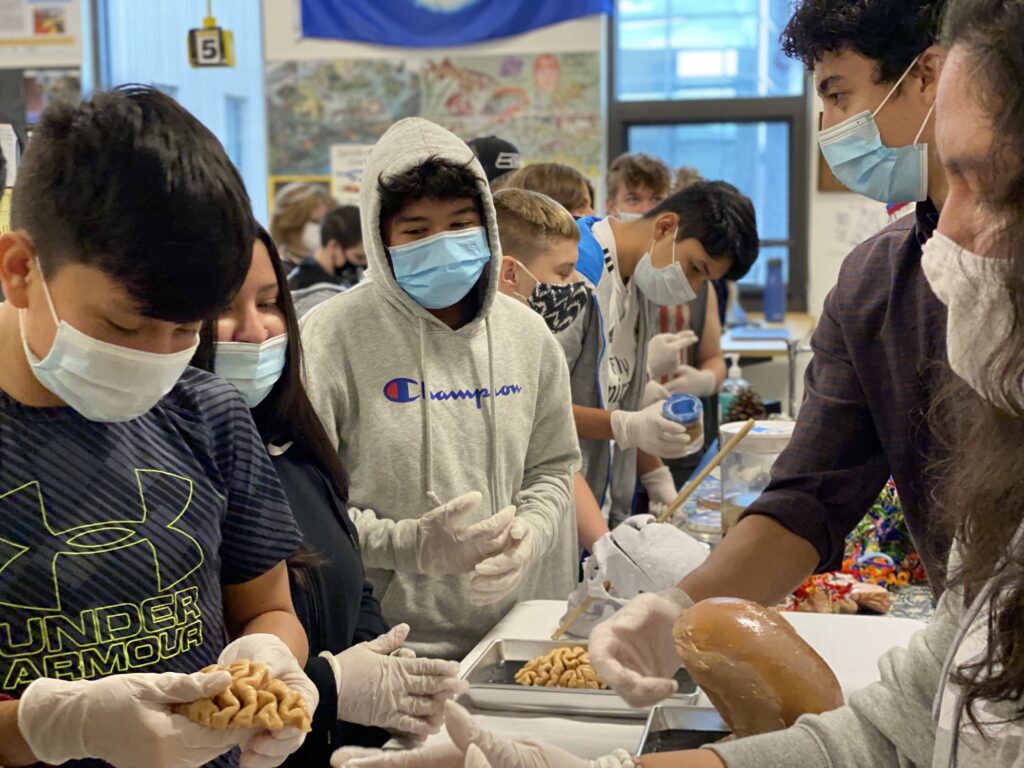
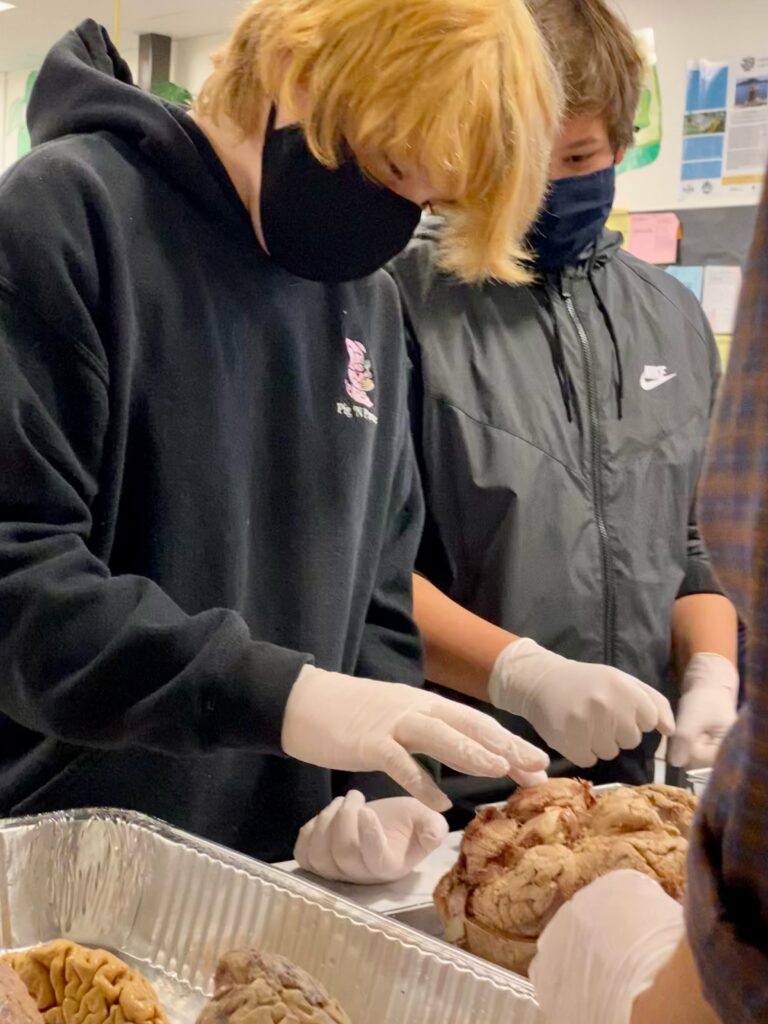
West Exchange School
On Wednesday morning we had the amazing chance to talk with curious younger kids at Astoria’s West Exchange School! Teacher Sarah Cobb welcomed our volunteers to her beautiful back garden, where we discussed some of the deepest questions of the week.
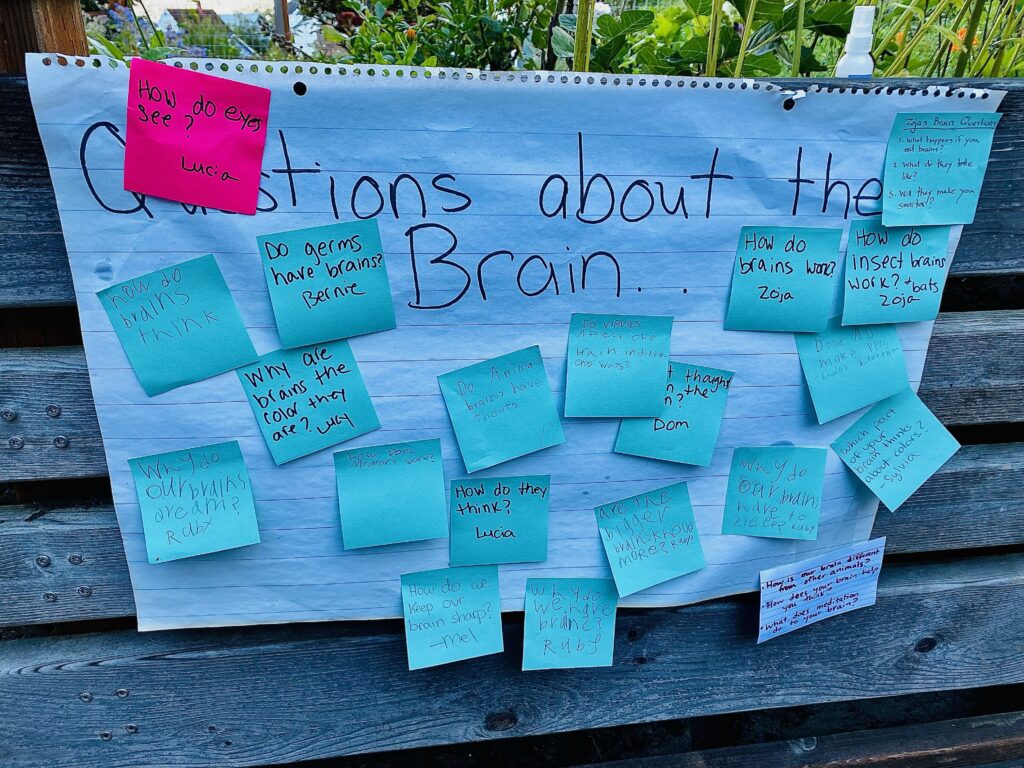
LEARN MORE: Is Your Brain Fractal?
LEARN MORE: The Mycelium as a Network
LEARN MORE: Until the story takes shape
LEARN MORE: Effects of storytelling on the childhood brain
LEARN MORE: How Stories Connect And Persuade Us: Unleashing The Brain Power Of Narrative
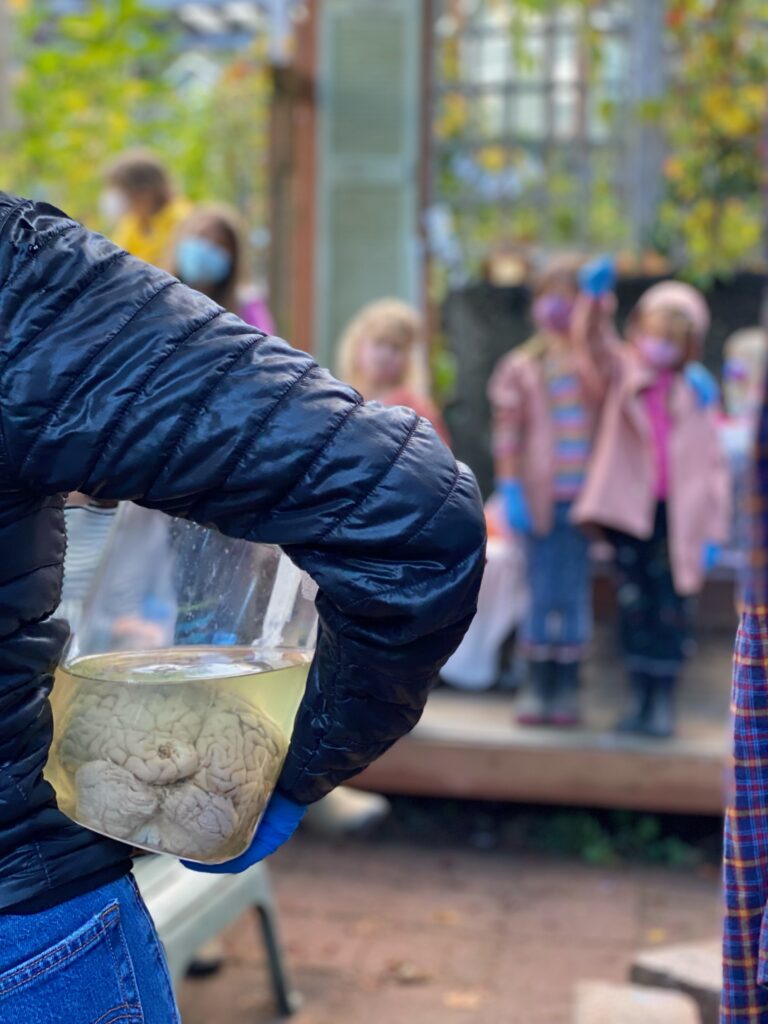
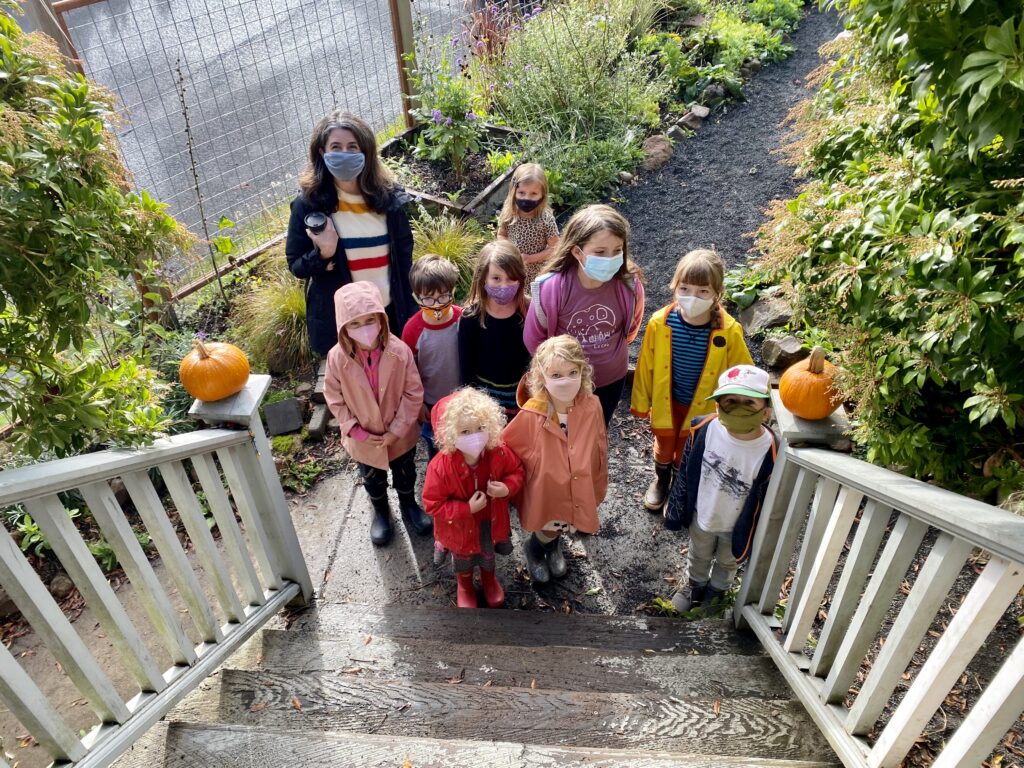
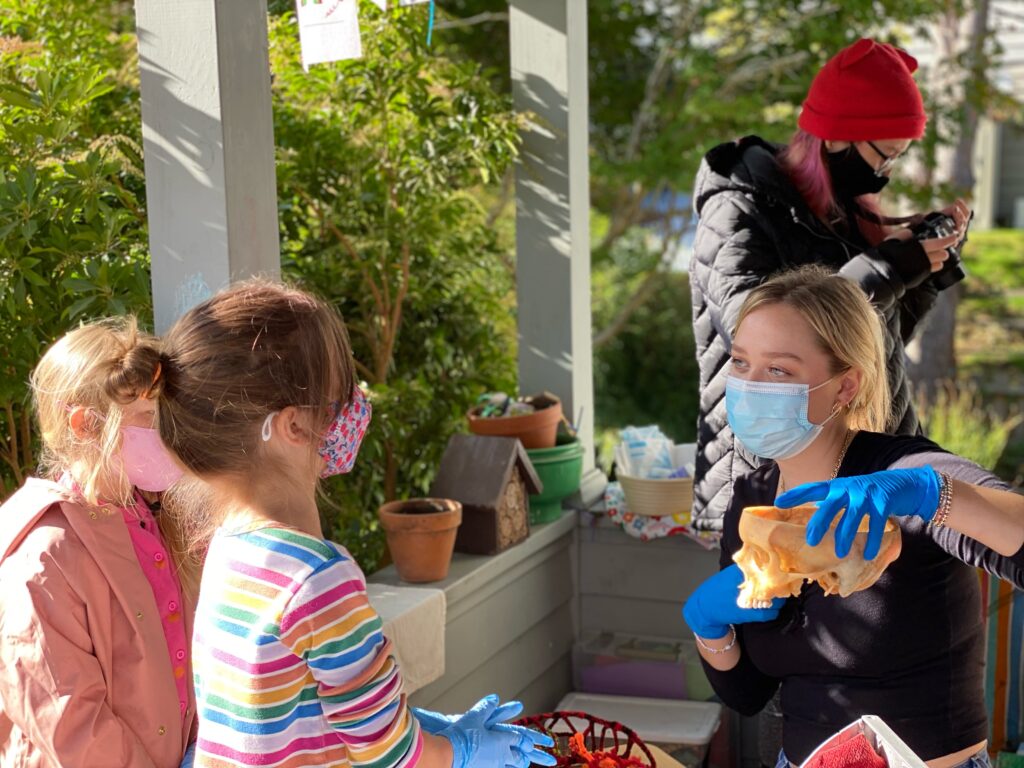
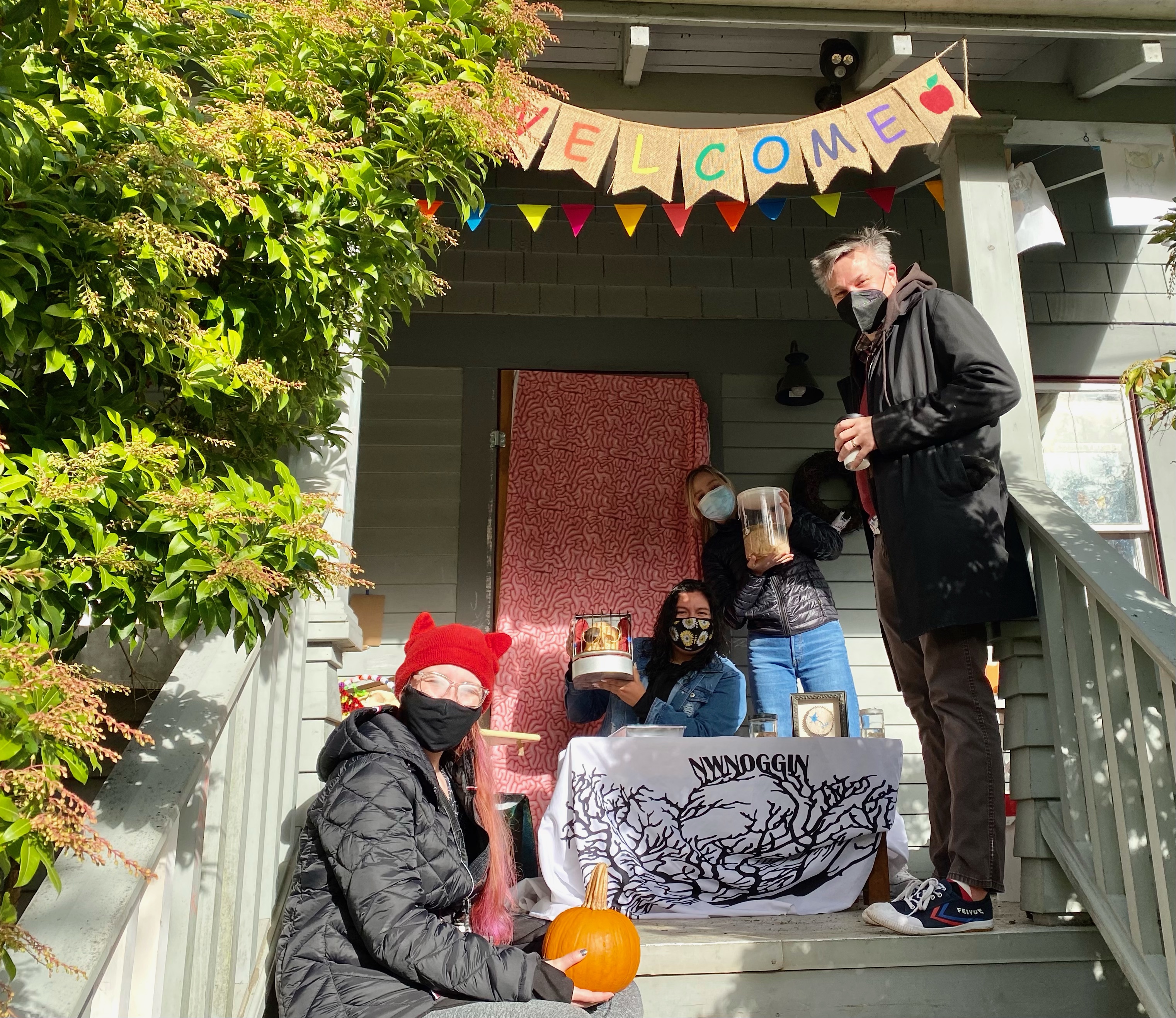
From PSU volunteer Ellie Phelps: “The lil ones asked the big questions. Questions like do germs have brains? What was the beginning of the universe? How do we think?”
LEARN MORE: DNA, RNA, and the Flow of Genetic Information
LEARN MORE: Coronavirus biology and replication: implications for SARS-CoV-2
LEARN MORE: The origins of the universe: why is there something rather than nothing?
LEARN MORE: Know Your Brain
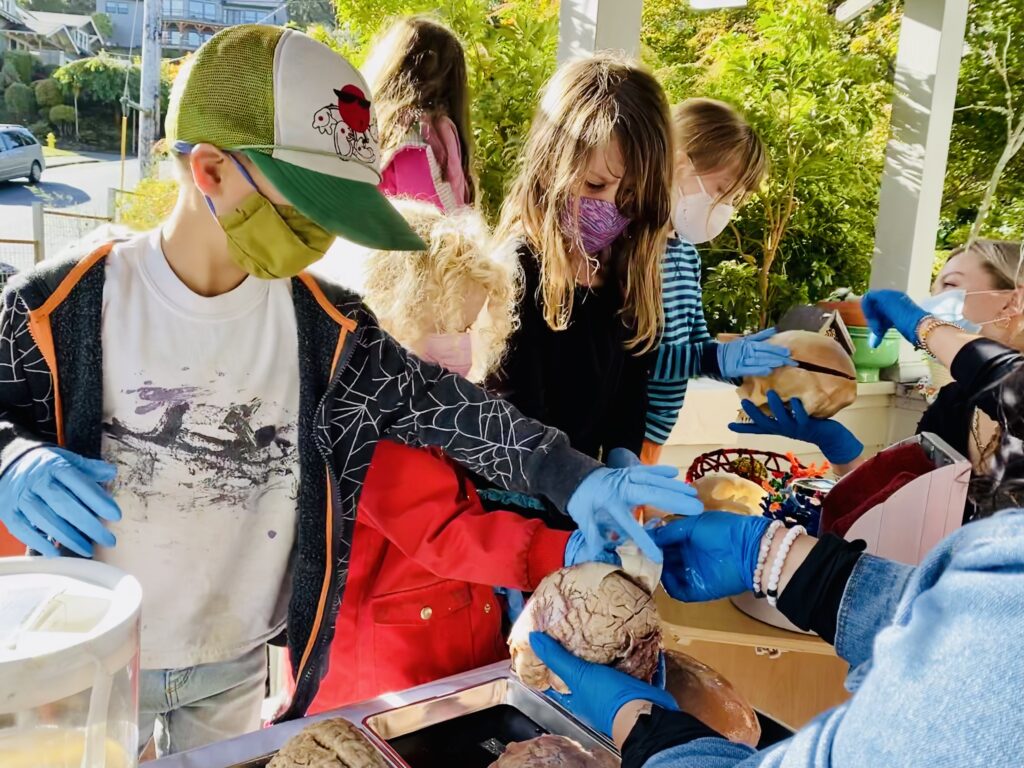
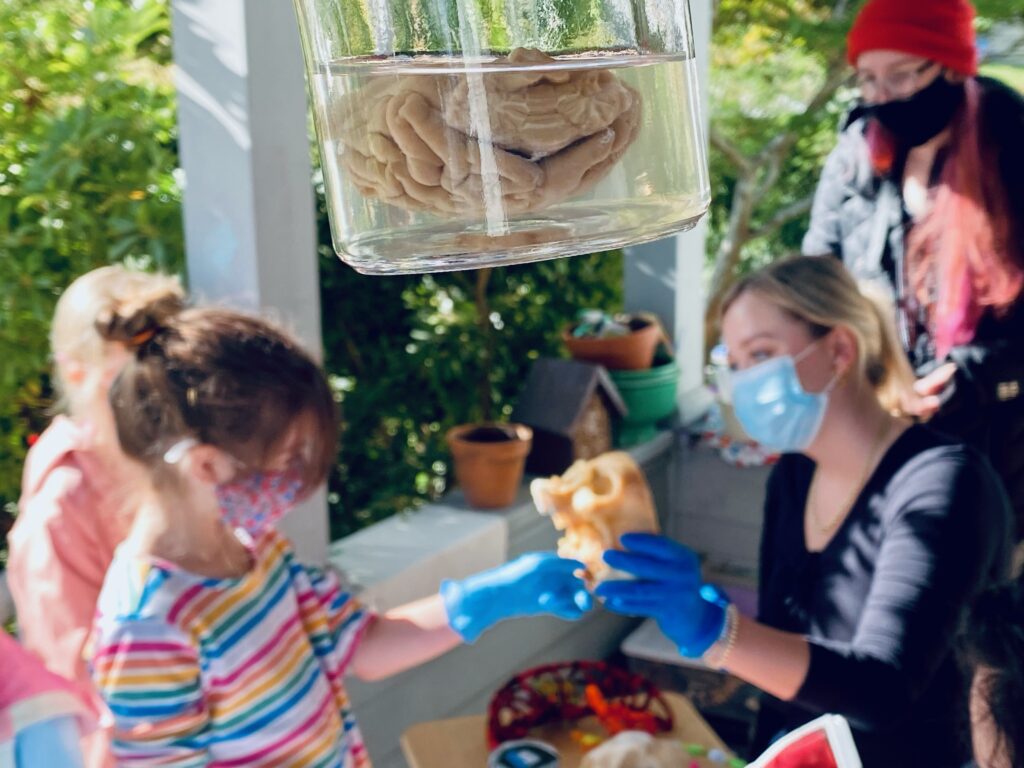
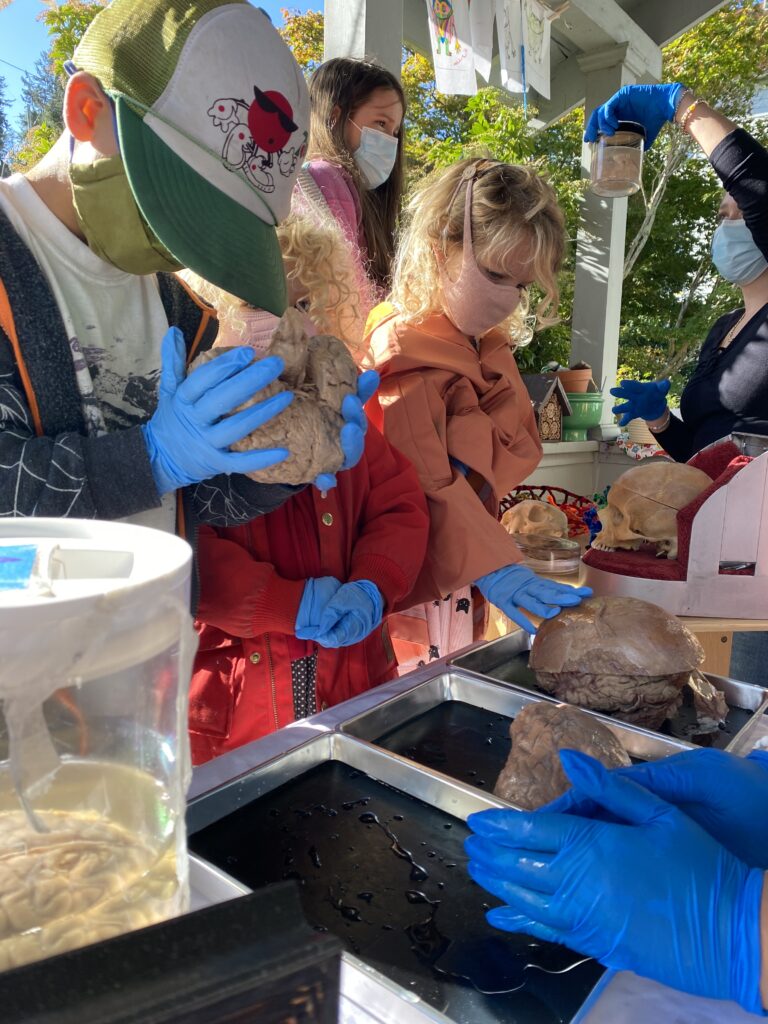
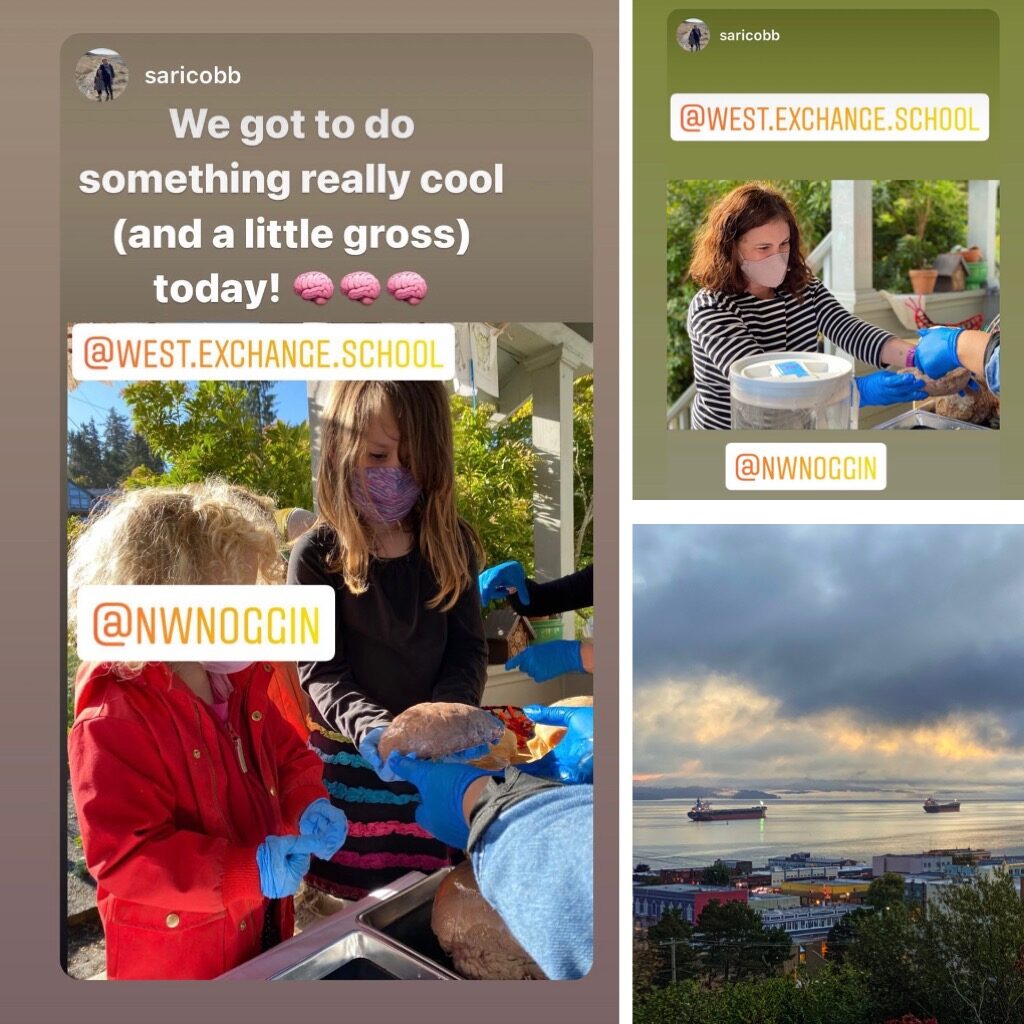
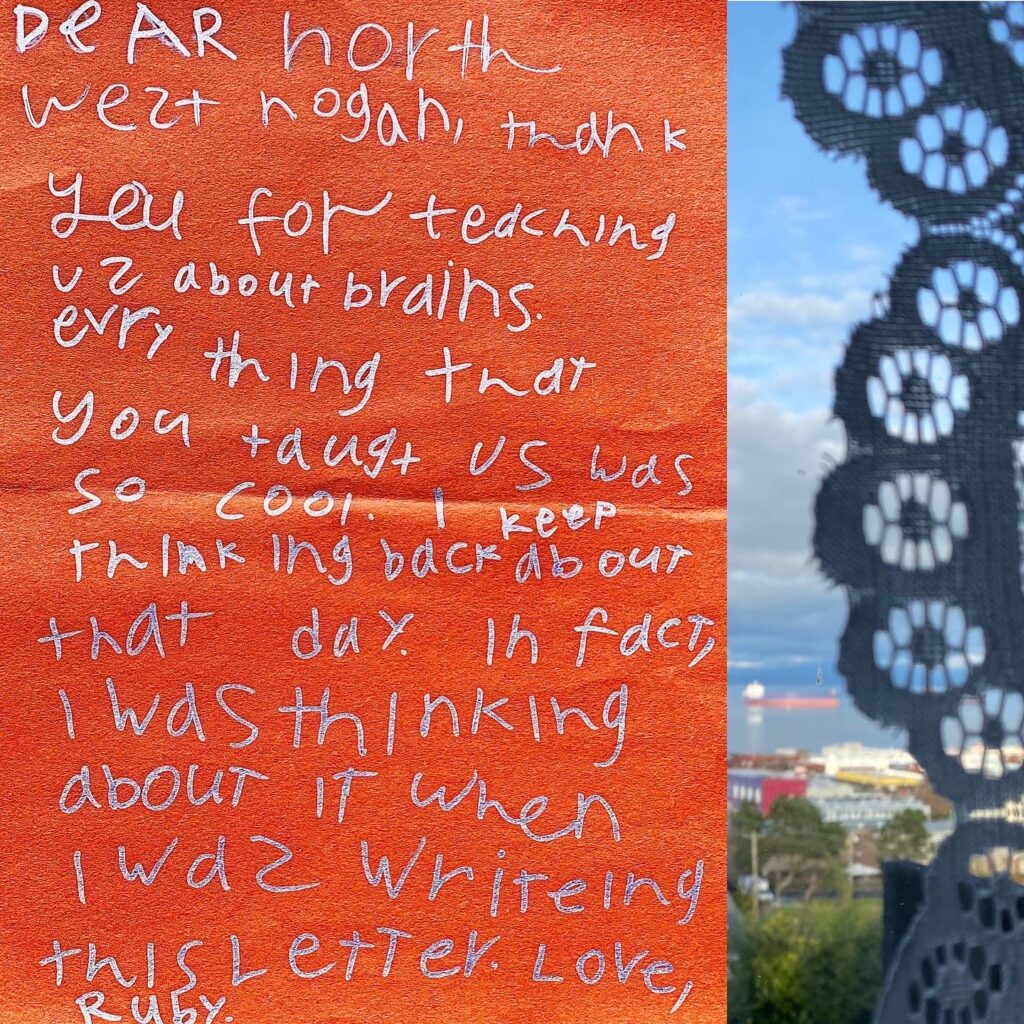
Astoria High School
After West Exchange we headed to Astoria High School on Wednesday afternoon, and also spent most of Thursday – our last day of outreach – at the home of the Fishermen with over 100 of Nick Baisley and Sara Oien’s Psychology and Biology students!
Still MORE compelling questions!
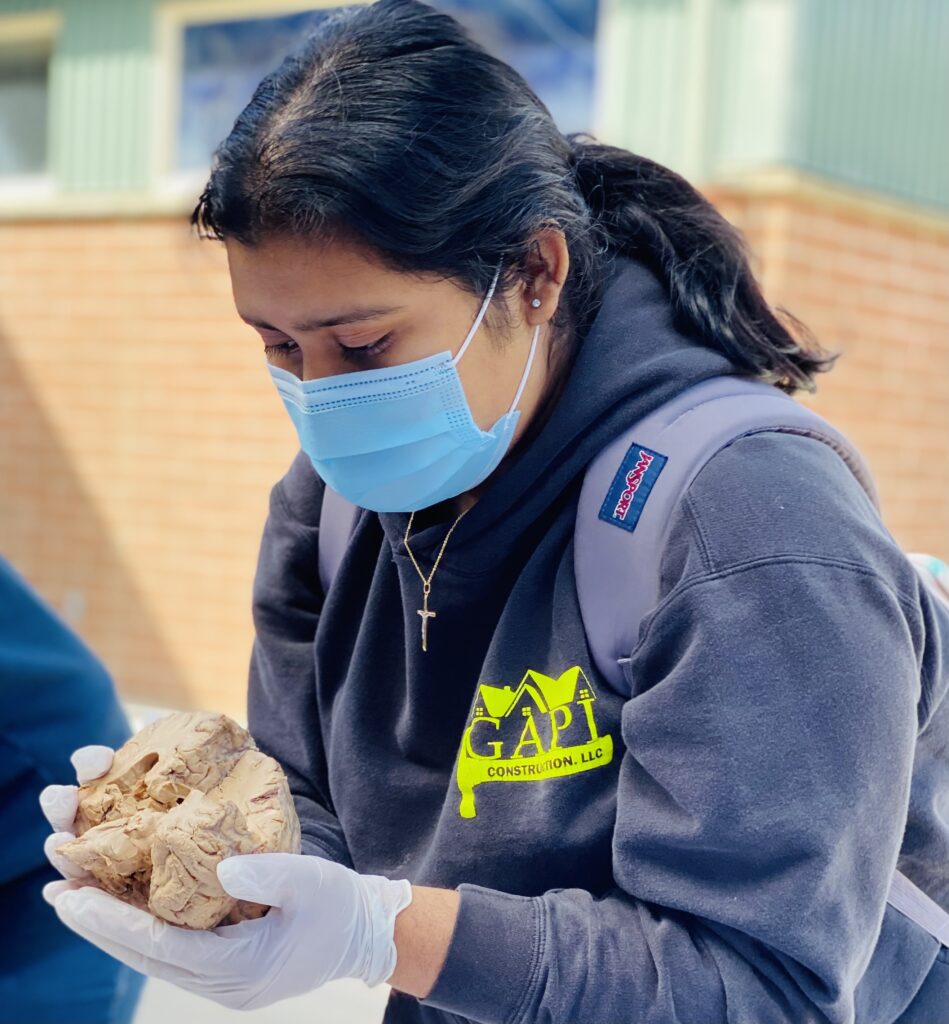
There are many interactions between our brains and our guts, where a significant concentration of organisms that live in us, and on us, actually reside. They form part of our microbiome, and traumatic injury to either the brain or the gut can result in microbiome changes that may impact recovery and our mental health.
LEARN MORE: Traumatic Brain Injury
LEARN MORE: Caring for Concussions – more than a bump on the head
LEARN MORE: The gut in trauma
LEARN MORE: What is the Microbiome
LEARN MORE: Brain-gut axis dysfunction in the pathogenesis of traumatic brain injury
LEARN MORE: Moderate Traumatic Brain Injury Alters the Gastrointestinal Microbiome in a Time-Dependent Manner
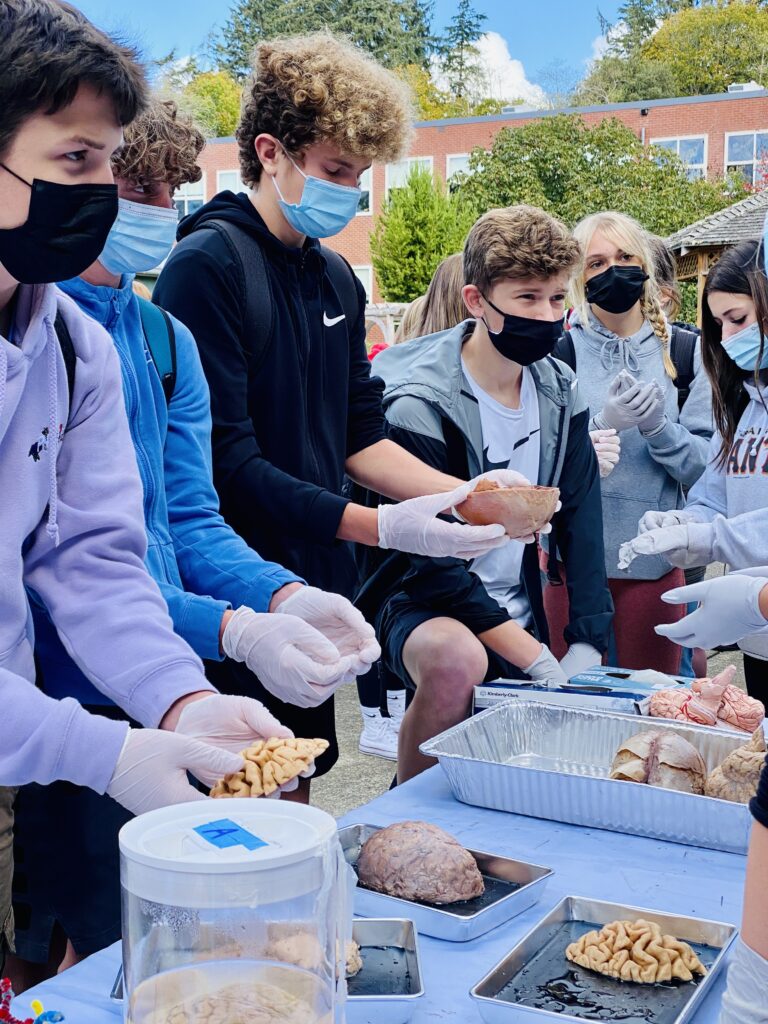
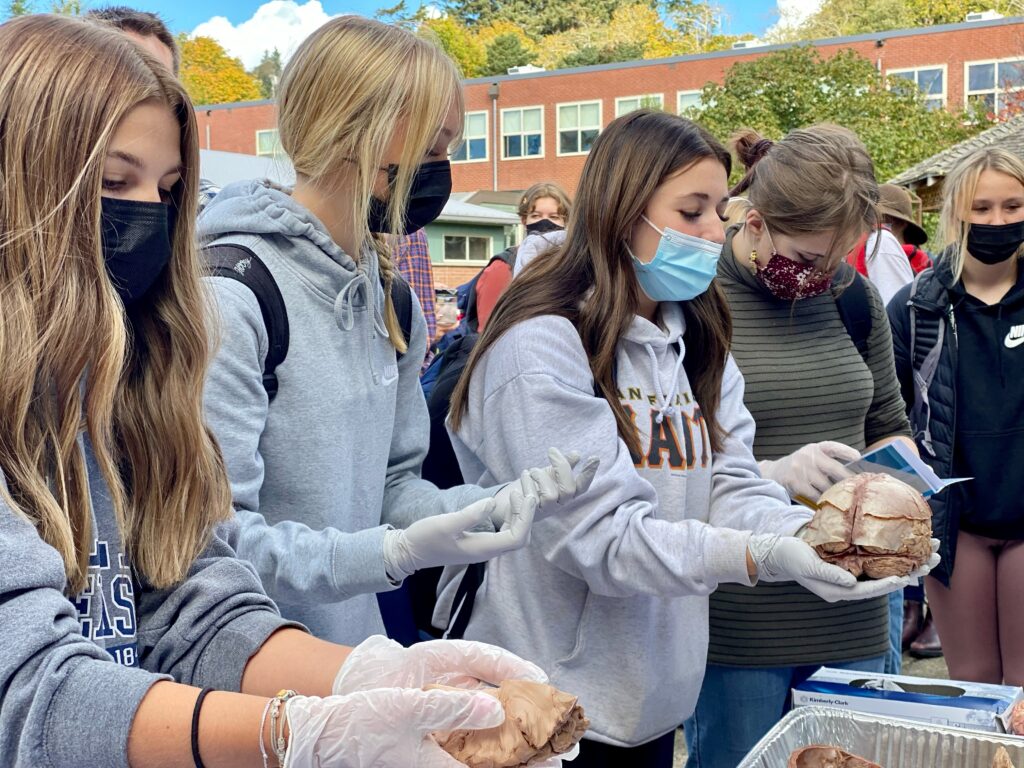
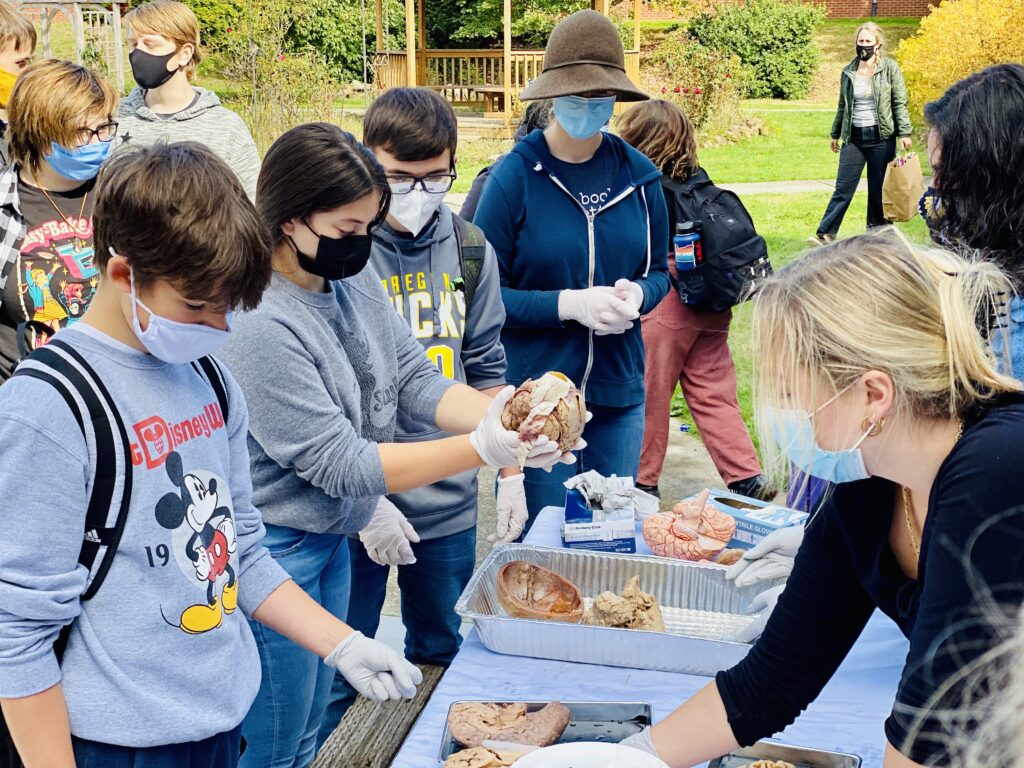
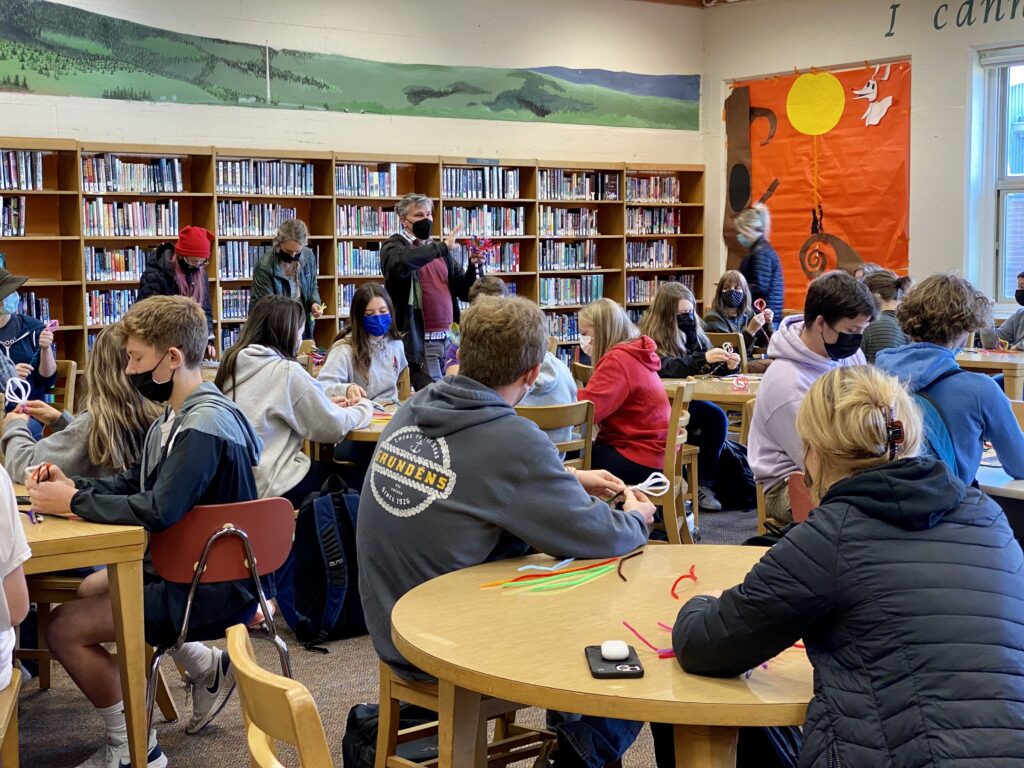
LEARN MORE: Noggins in Nod
LEARN MORE: Sleep Paralysis, a Medical Condition with a Diverse Cultural Interpretation
LEARN MORE: A Meaningful Step Toward Understanding the Cause and Impact of Nightmares
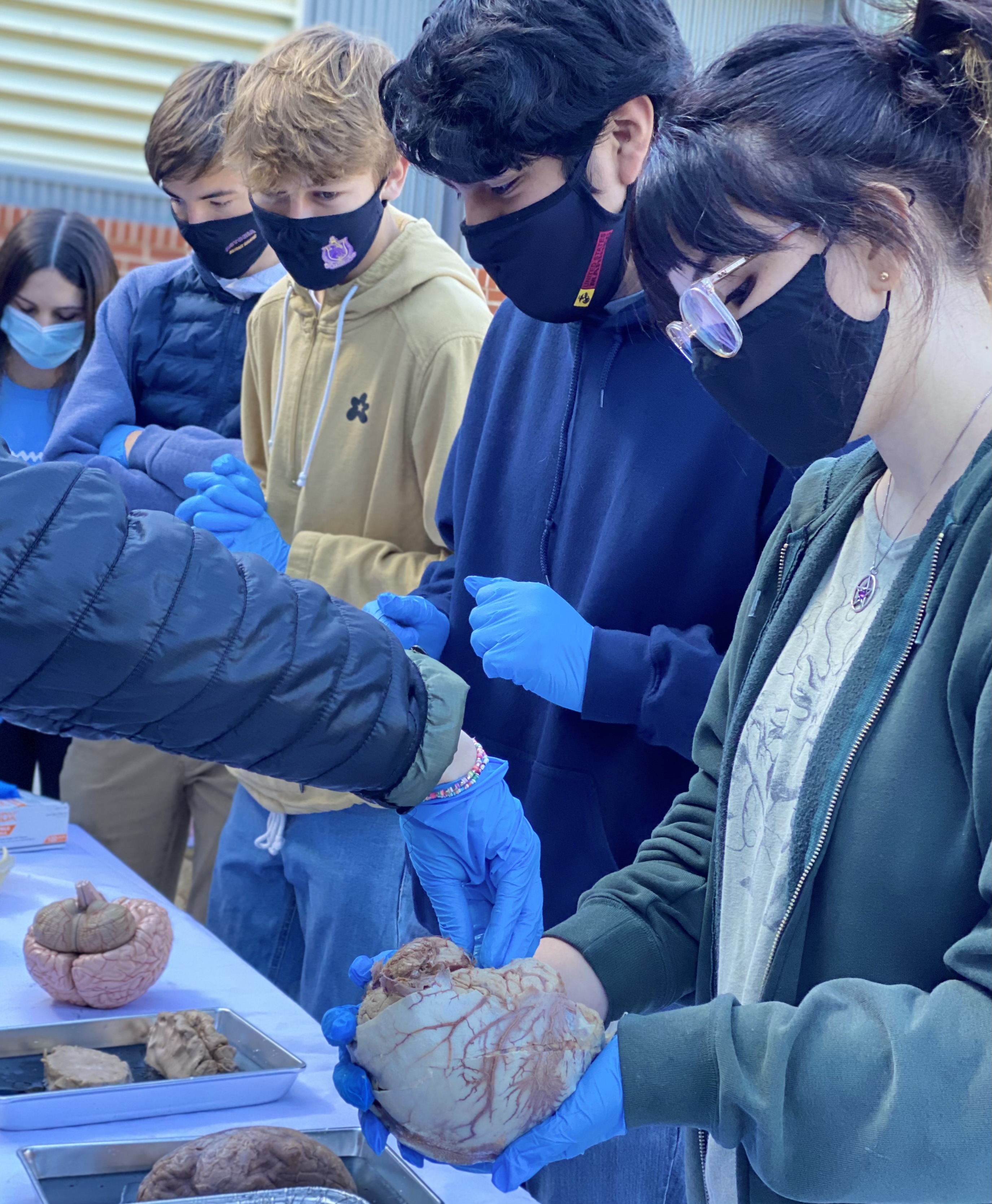
“…based on comparisons of large populations living in Daylight Savings Times (DST) or Standard Time (ST) or on western versus eastern edges of time zones, the advantages of permanent Standard Time outweigh switching to Daylight Savings Time annually or permanently.“
LEARN MORE: Why should we abolish Daylight Saving Time?
LEARN MORE: Daylight Saving Time and Artificial Time Zones – A Battle Between Biological and Social Times
LEARN MORE: Save Standard Time
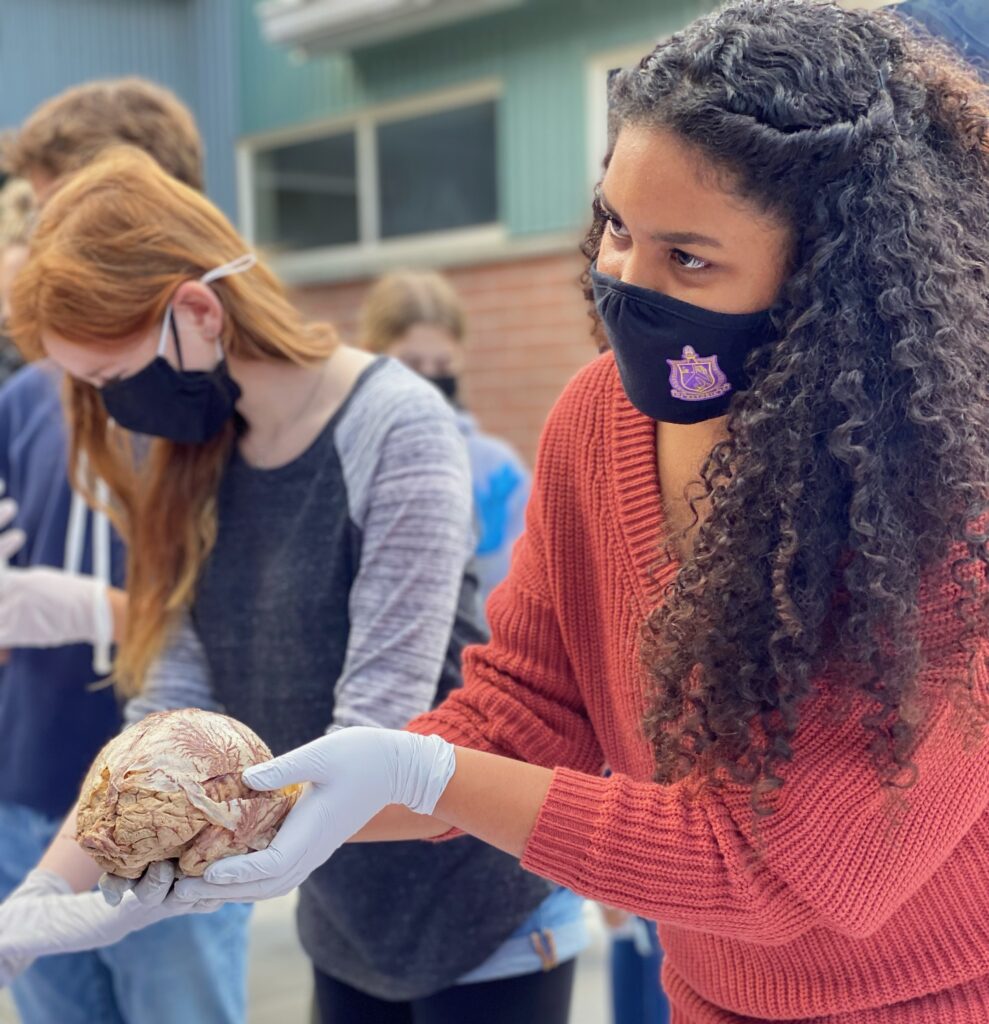
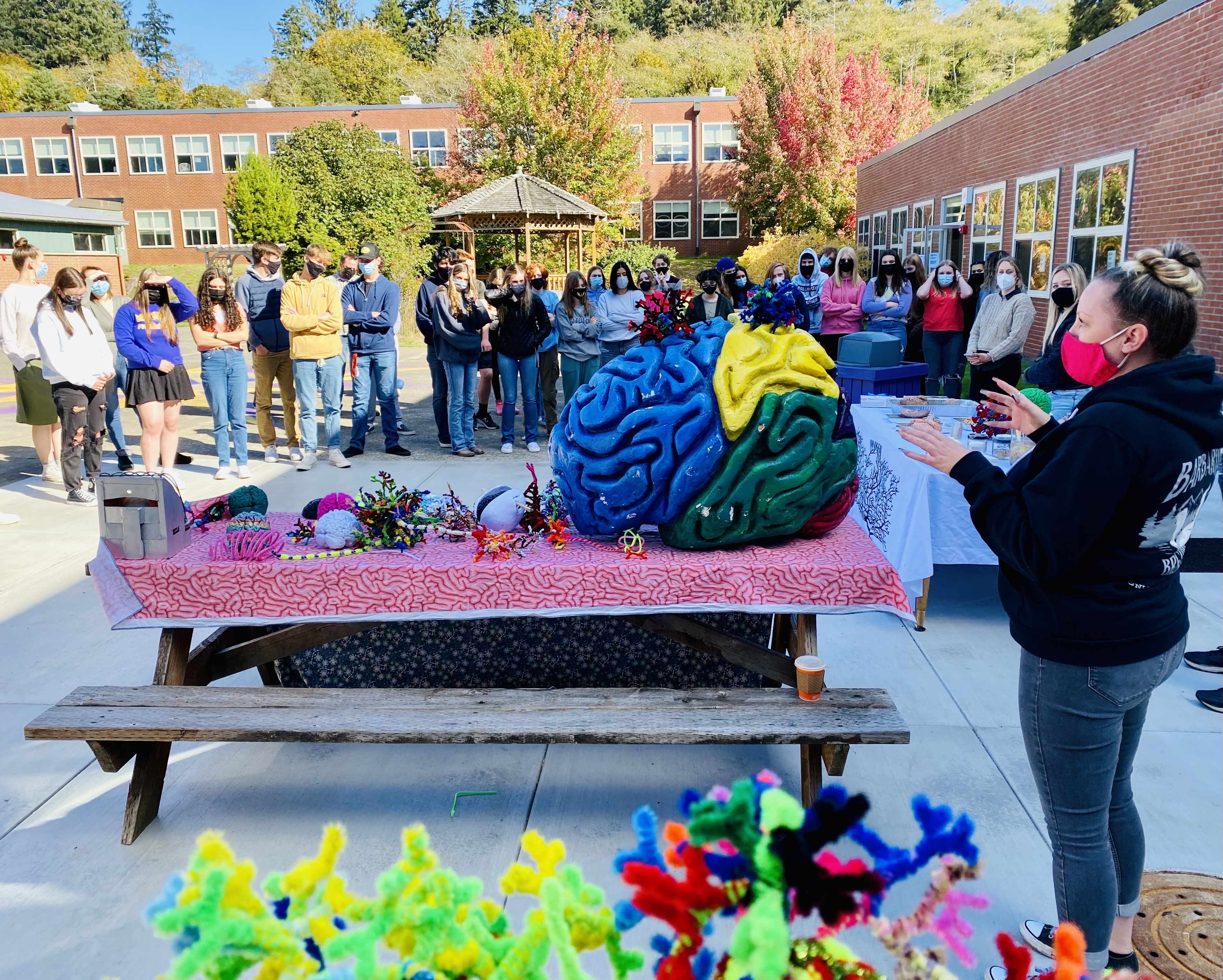

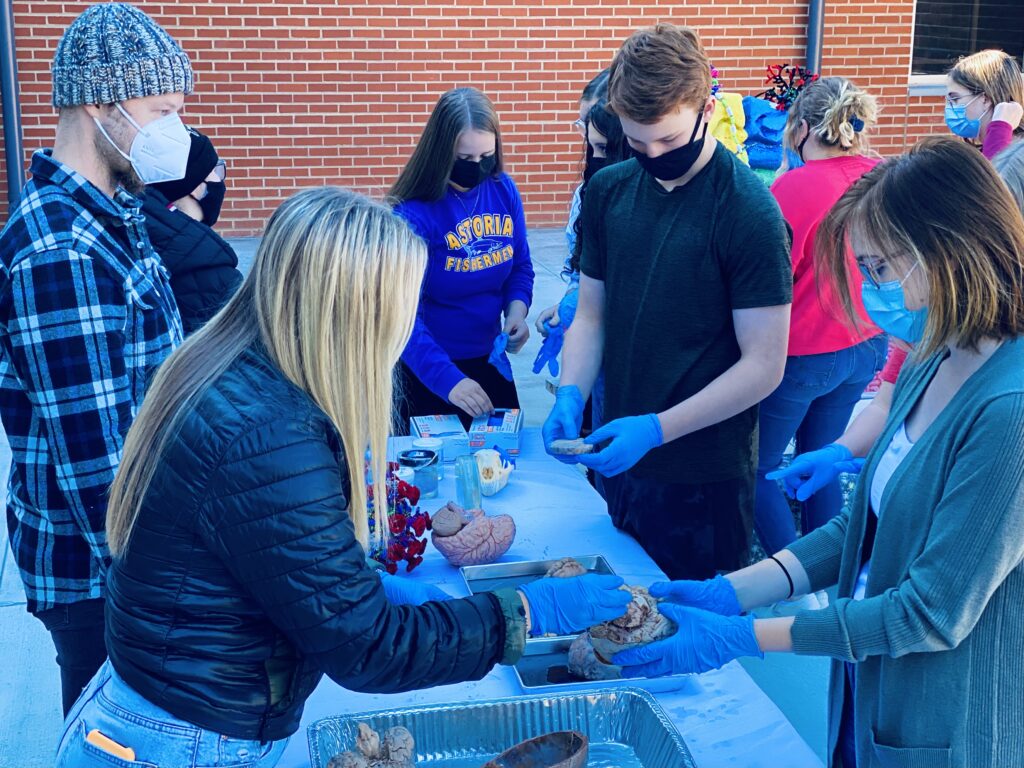
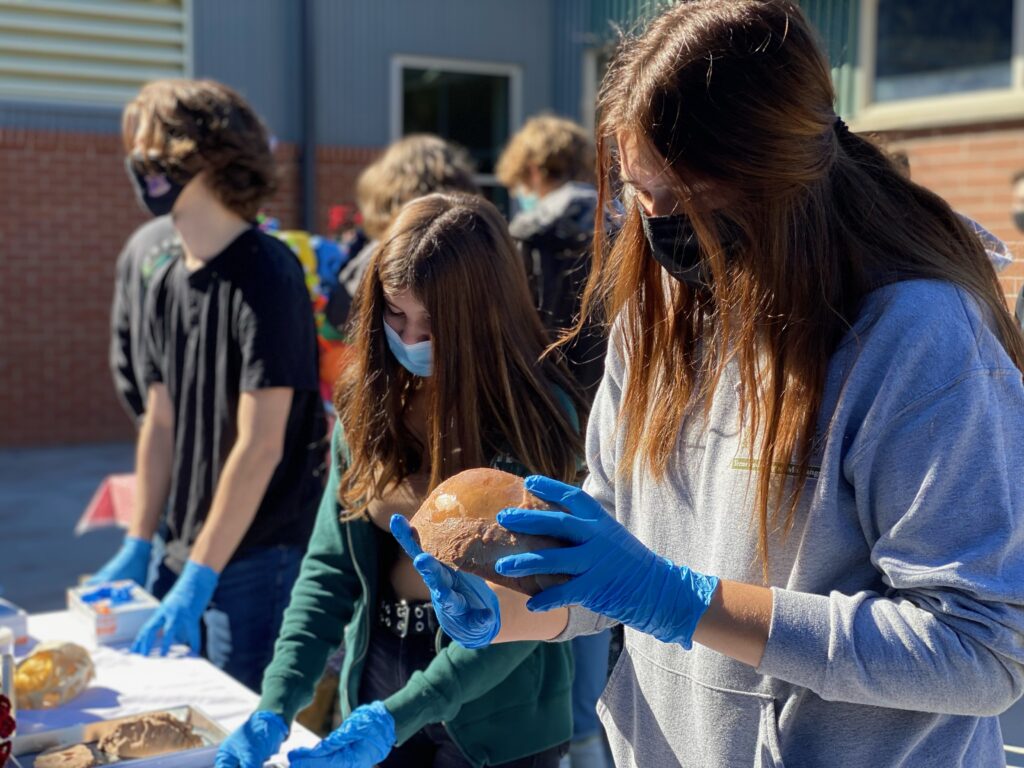
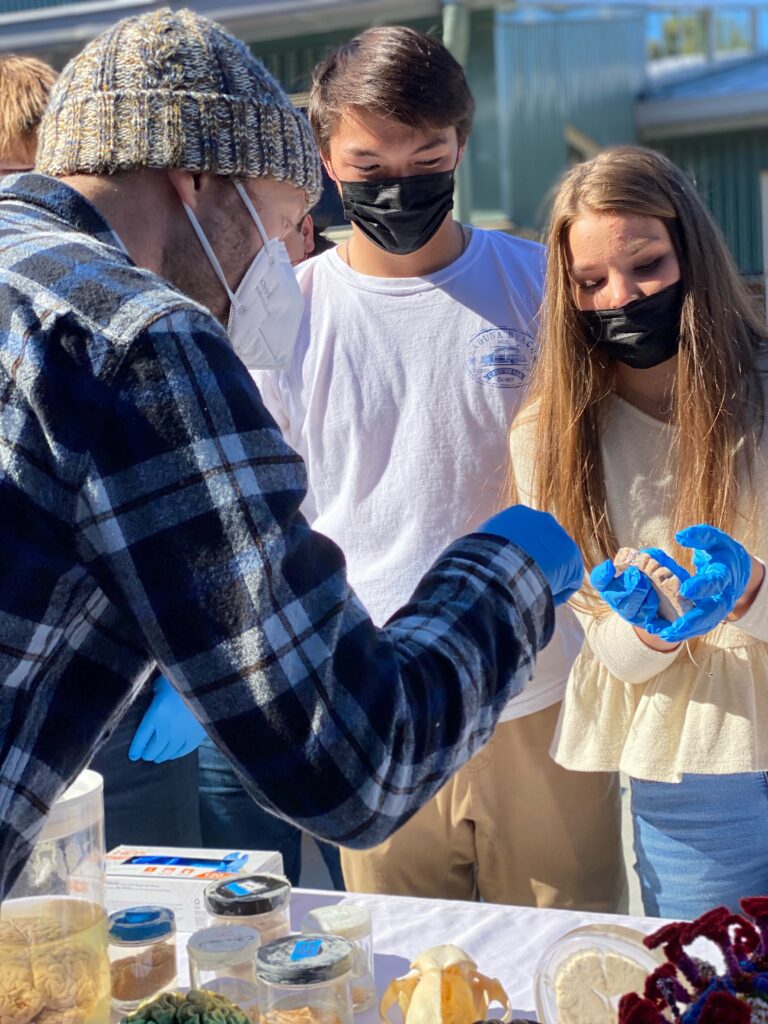
From PSU undergraduate Ellie Phelps:
“The four days I spent with NW Noggin have been the highlight of my educational career.”
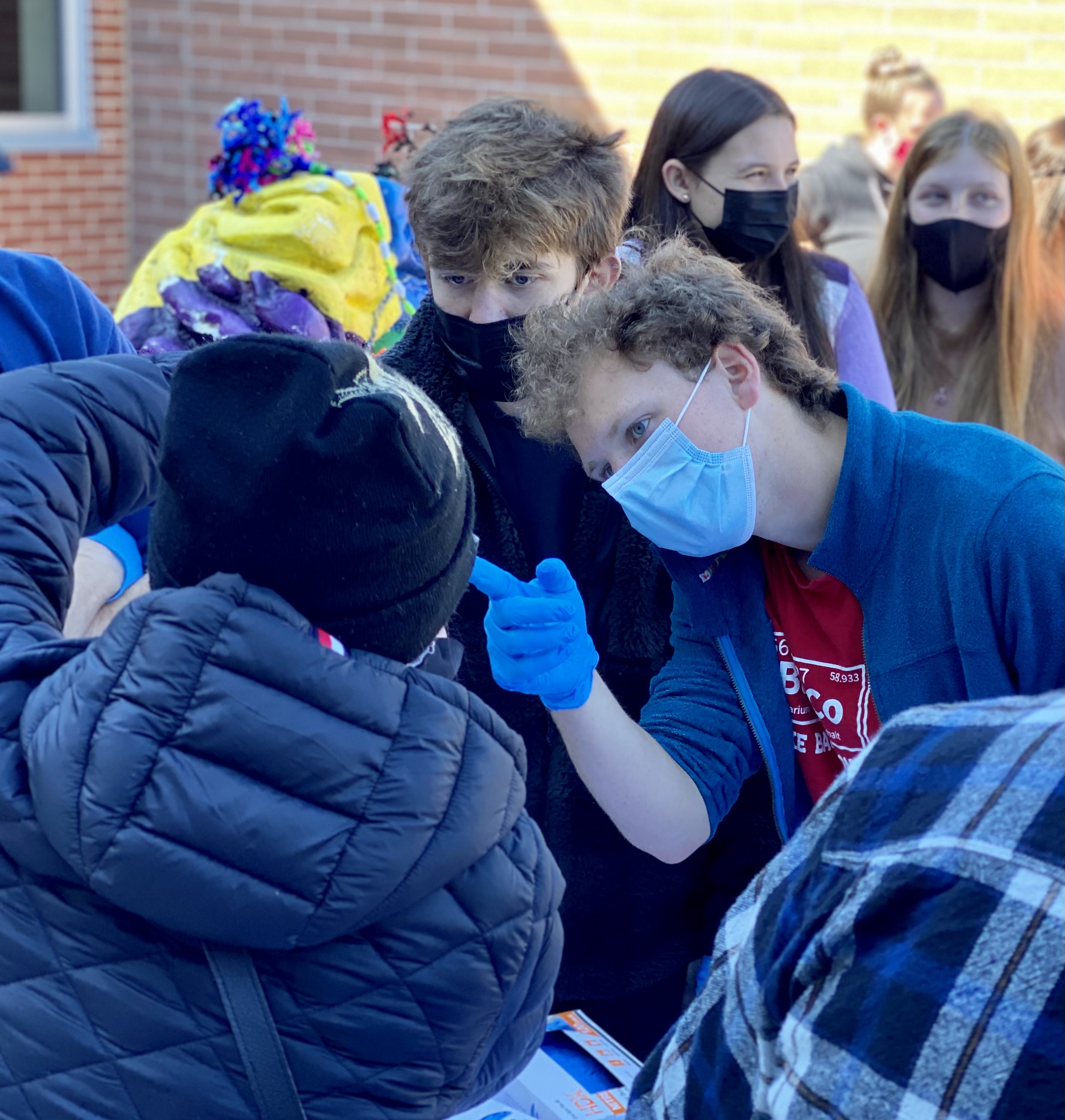
“Not only did we get paid lodging at the most beautiful Rosebriar Mansion with a private room and meals from local eateries like the Fort George, Peter Pan Market, The Stand and Astoria Coop, but we were able to reach out to over 300 brilliant young minds to discuss the wonders of the brain.”
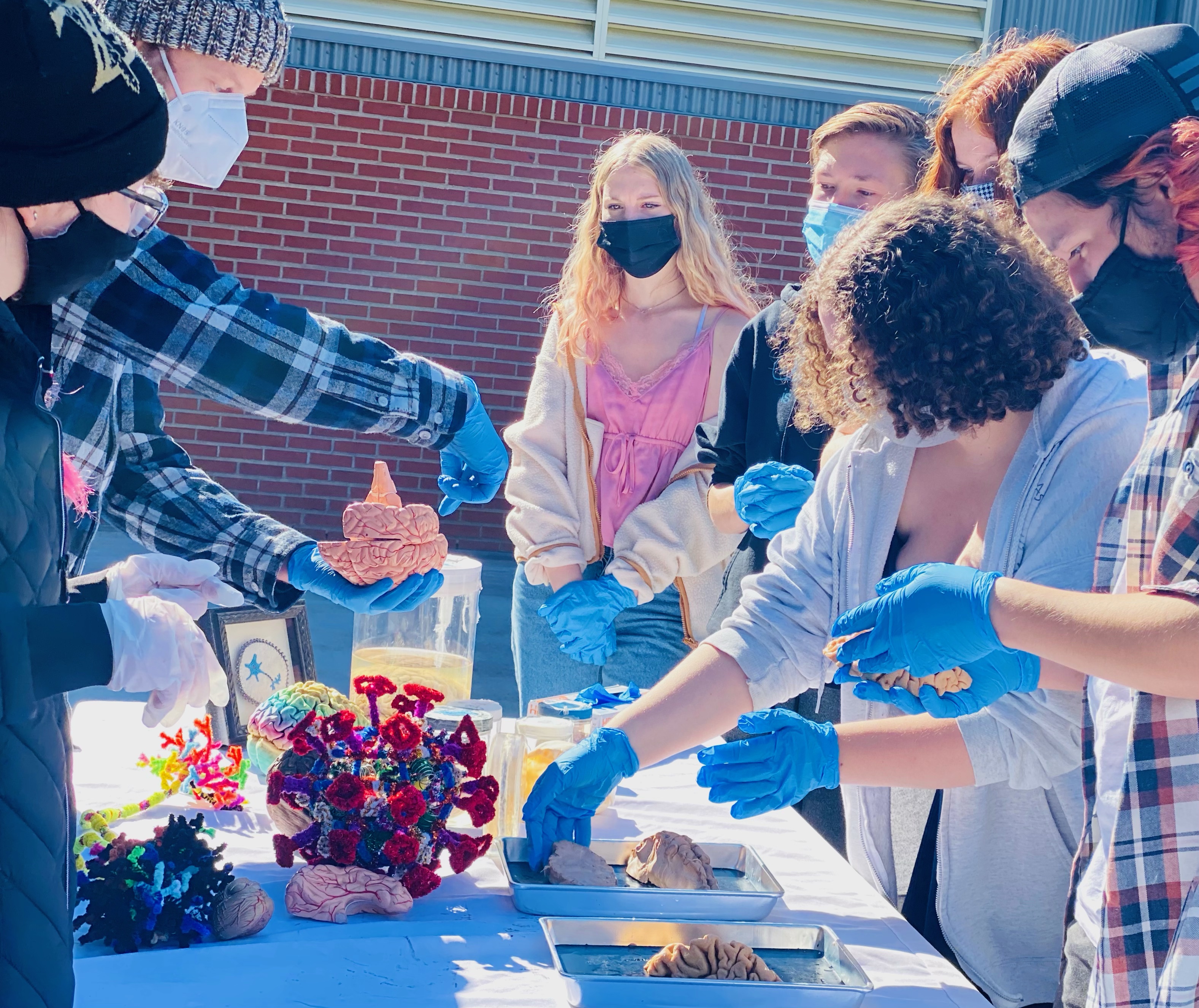
“My fellow volunteers were exceptionally skilled in their specific fields of study and each of us were able to provide a unique perspective on the questions brought up by the students.”
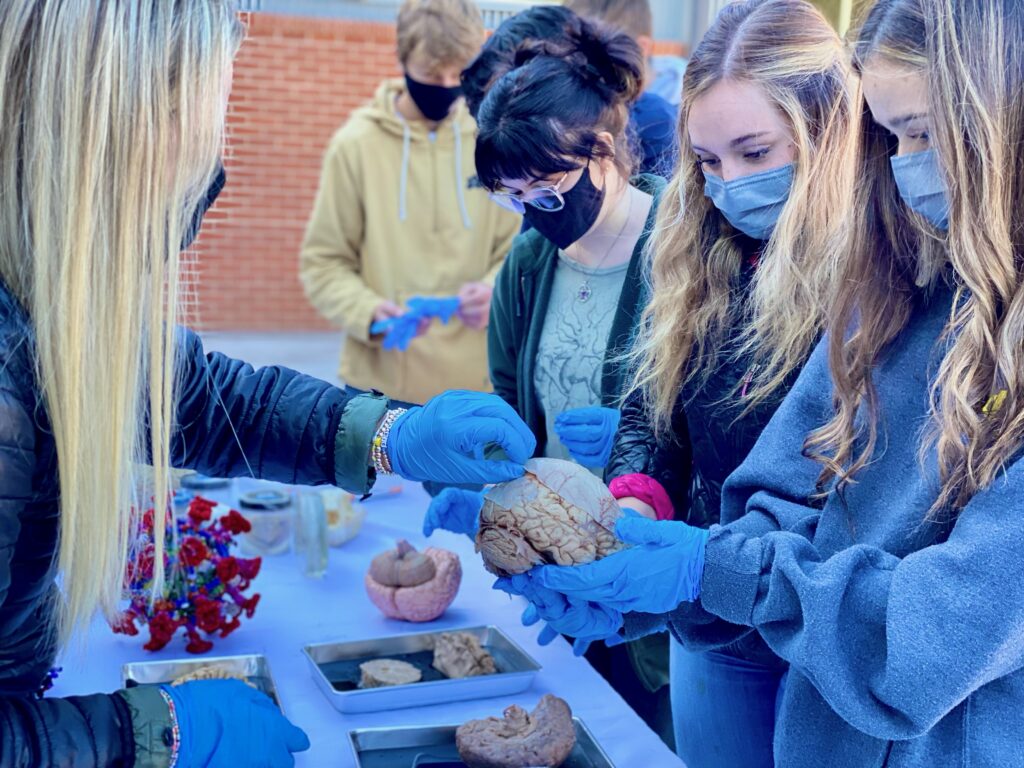
“I was nervous at first.“
“I didn’t feel like I had the tools to teach so many students. But we weren’t lecturing them but letting them ask questions to direct the conversation. By the end of the week I found confidence in my knowledge of the brain and my ability to spread that knowledge to various age groups.”
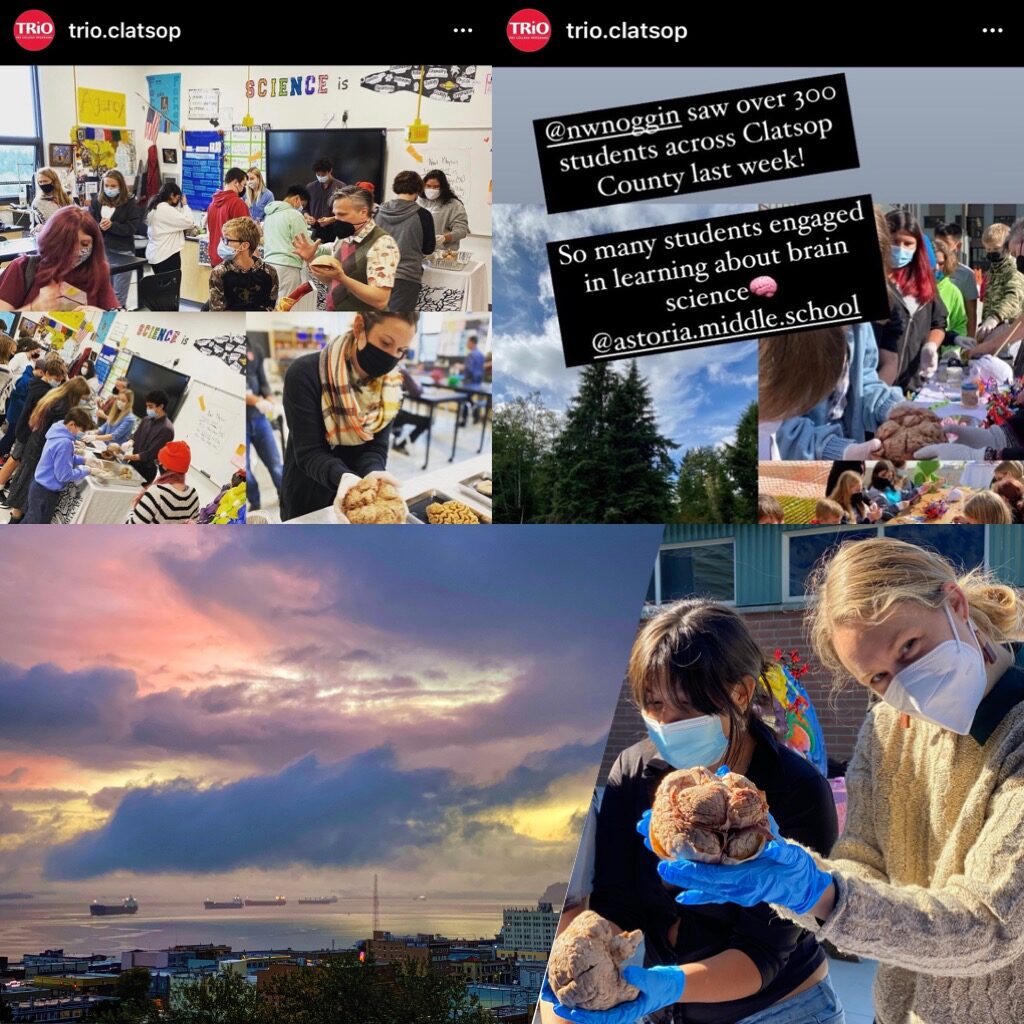
“Such a lovely group of people, and I personally learn something new about brain science every single class session. I’m grateful to this group of folks for being willing to take on this week, they saw over 300 students across Clatsop County! Pretty awesome, big thanks to NW Noggin!”
― Meredith Payton, TRIO Program @ Clatsop Community College
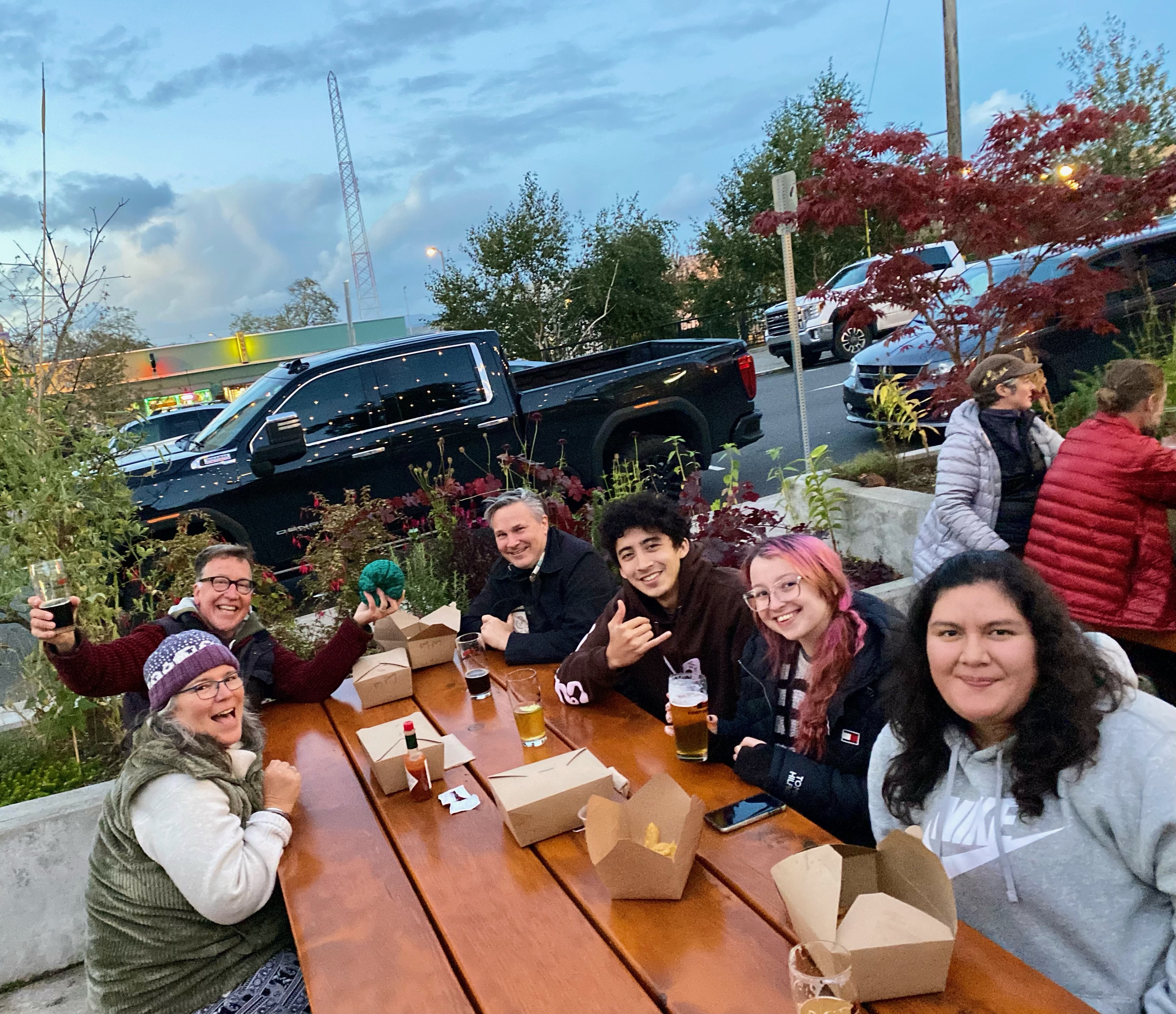
So many thanks to our extraordinary NW Noggin outreach volunteers, to Meredith Payton, to teachers Katie Killough, Annie Foreman, Sarah Cobb, Nick Baisley and Sara Oien, to our community sponsors – and to the incredible young artists and neuroscientists on the North Oregon coast!
